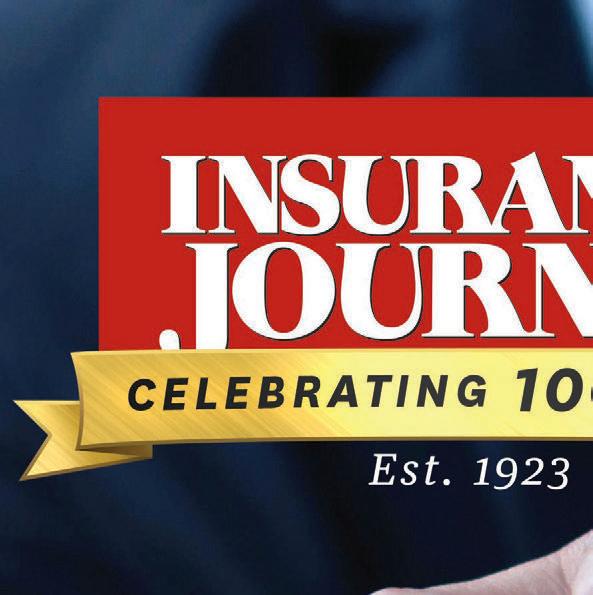












APPLIED PROTECTS THE TITANS OF INDUSTRY.® ©2023 Applied Underwriters, Inc. Rated A- (Excellent) by AM Best. Insurance plans protected U.S. Patent No. 7,908,157. IT PAYS TO GET A QUOTE FROM APPLIED®



Accepting large workers’ compensation risks. Most classes. All states, all areas, including New York City, Boston, and Chicago. Few capacity and concentration restrictions. Simpli ed nancial structure covers all exposures. EXPECT THE WINNING DEAL ON LARGE WORKERS’ COMPENSATION. Call (877) 234-4450 or visit auw.com to get a quote.



4 | INSURANCE JOURNAL | APRIL 3, 2023 INSURANCEJOURNAL.COM Contents News & Markets 8 U.S. Commercial Rates Increased in Q4 – But at Slower Pace: WTW 12 P/C Carriers Losing Ground to MGAs in Talent War 14 Louisiana Supreme Ct. Reverses, Finds No Coverage Owed for COVID Shutdown 15 WCRI: Consolidation of Health Care Driving Up Prices in Work Comp 26 Heavier Vehicles, Distracted Drivers Impacting Claim Severity Departments 6 Opening Note 10 Figures 11 Declarations 16 Business Moves 18 People 27 My New Markets Idea Exchange 36 Opportunity Abundant in the Multifamily Affordable Housing Market 38 Winning the Referral Game with Real Estate Education 40 Workplace Shootings Are on The Rise – Here’s How the Insurance Industry Can Respond 42 When it Comes to Today’s Mega-Concerts, Insurance Takes the Spotlight 44 The Talent Crunch Is Poised to Get Much, Much Tougher: Here’s How to Win 46 Minding Your Business: Acquisitions and Agency Value 48 Ask the Insurance Recruiter: A Checklist to Successfully Hire Remote Account Managers 50 Closing Quote: Overcoming Barriers: Where Are the New MGAs? Special Report 20 Closer Look: Insurer Startup Trium Cyber Finds Path to Profits, With Large Business Focus 22 Spotlight: Experts Urge Empathy, Thoughtfulness for Insurers in Challenging Cyber Landscape 24 Spotlight: Exploring the Dos and Don’ts of Drones, Insurance-Wise 28 Special Report: Hard Commercial Property Market to Linger as Property Owners Take On More Risk 30 Special Report: Risk Management Considerations for Condo Association Boards 32 Special Report: Architects’ & Engineers’ Market Sees Rising Claims Severity Amid Wave of New Projects 34 Spotlight: EEOC Releases Annual Report for Fiscal Year 2022 April 3, 2023 • Vol. 101 No. 6
THE SPECIALIZED INSURANCE YOU DIDN’T DARE DREAM ABOUT. BUT WE DELIVERED IT ANYWAY.
To offer truly specialized industry insurance, innovation is the name of the game. It’s how we’re taking specialization to a whole new level. With extensive experience in underwriting, risk engineering services and claims, we go beyond the expected. And we deliver the innovative, customizable solutions and service mid- to large-size businesses demand across a range of industries.

The Hartford Financial Services Group, Inc., (NYSE: HIG) operates through its subsidiaries, including underwriting company Hartford Fire Insurance Company, under the brand name, The Hartford®, and is headquartered at One Hartford Plaza, Hartford, CT 06155. For additional details, please read The Hartford’s legal notice at www.TheHartford.com. 23-ML-1752450 © March 2023 The Hartford
TheHartford.com/specialization
Small Business Gap
There appears to be a large gap between small business owners’ biggest stressors in 2023 and what they’re prepared for when it comes to their insurance knowledge and coverage. That’s according to data released from NEXT Insurance which surveyed more than 500 small business owners across the United States.
Insurance is often a blind spot for small business owners, the survey revealed, as 90% of respondents noted they lack confidence that their businesses are adequately insured. Also, 96% of respondents did not achieve a grade of 70% or higher in a general insurance knowledge test. Yet, only a third reported seeking professional help for their insurance needs. None of the 500 respondents got a perfect “test” score, indicating that many still need the proper support to navigate the industry.
According to NEXT, small businesses are often a bellwether for the greater American and global economies. When small businesses begin to feel pressured by inflation, supply chain woes, staffing shortages and more, it signals broader challenges ahead.
Key survey findings include:
• More than half of the respondents (51%) listed making a professional mistake — anything from workplace accidents or HR issues to clerical errors — as a top potential risk with the power to negatively impact their business. Surveyed small business owners also indicated their top stressors for the coming year: 68% are most concerned about inflation, followed by reduced consumer spending, a potential recession and supply chain issues.
• Despite 90% of small businesses lacking confidence that they’re adequately insured against their most worrisome risks, more than a quarter of respondents (29%) don’t have any business insurance coverage at all. More than half of those surveyed (51%) say their business is less than “very prepared” to face potentialrisks, but 18% of all respondents are not taking or do not plan to take any steps in the next six months to better protect their business.
• More than half of survey respondents (53%) said their greatest barrier to obtaining insurance comes down to knowing what coverage and policies their business needs. Despite not knowing where to start, just one-third will seek professional help.
• Rural business owners are more concerned about inflation than their counterparts in the suburbs (71% versus 64%). Cyberattacks or data breaches keep small business owners over 45 years old up at night compared to those under 45 (41% versus 30%). Female small business owners are facing a more challenging insurance journey than their male counterparts: Women are more likely to see their knowledge of coverage and policy needs as a barrier to getting insurance compared to men (60% of women compared to 50% of men). Women are also more likely to not have insurance (35%) compared to men (25%).
NEXT conducted its survey in early 2023 to understand what challenges are top of mind for small business owners, how prepared they feel for challenges from an insurance perspective, and to test their knowledge of general liability insurance.
Andrea Wells Vice President, Content
Chairman of the Board Mark Wells | mwells@wellsmedia.com
Chief Executive Officer Joshua Carlson | jcarlson@insurancejournal.com
ADMINISTRATION / CIRCULATION
Chief Financial Officer Mark Wooster | mwooster@wellsmedia.com
Circulation Manager Elizabeth Duffy | eduffy@wellsmedia.com
Staff Accountant Sarah Kersbergen | skersbergen@wellsmedia.com
EDITORIAL
V.P. of Content Andrea Wells | awells@insurancejournal.com
Executive Editor Emeritus Andrew Simpson | asimpson@wellsmedia.com
National Editor Chad Hemenway | chemenway@insurancejournal.com
Southeast Editor William Rabb | wrabb@insurancejournal.com
South Central Editor/Midwest Editor Ezra Amacher | eamacher@insurancejournal.com
West Editor Don Jergler | djergler@insurancejournal.com
International Editor L.S. Howard | lhoward@insurancejournal.com
Content Editor Allen Laman | alaman@wellsmedia.com
Assistant Editor Jahna Jacobson | jjacobson@insurancejournal.com
Copy Editor Stephanie Jones | sjones@insurancejournal.com
Columnists & Contributors
Contributors: Elizabeth Blosfield, Lael Chappell, Joseph Dorr, Jim Sams, Susanne Sclafane, Christa Solfanelli, Megan Stevenson, Nathan Tripler, Frank Zuccarello
Columnists: Tony Caldwell, Catherine Oak, Mary Newgard
SALES / MARKETING
Chief Marketing Officer
Julie Tinney | jtinney@insurancejournal.com
West Sales
Dena Kaplan | dkaplan@insurancejournal.com

Romeo Valdez | rvaldez@insurancejournal.com
Kelly DeLaMora | kdelamora@wellsmedia.com
South Central Sales Mindy Trammell | mtrammell@insurancejournal.com
Southeast and East Sales (except for NY, PA, CT)
Howard Simkin | hsimkin@insurancejournal.com
Midwest Sales
Lisa Whalen | (800) 897-9965 x180
East Sales (NY, PA and CT only)
Dave Molchan | (800) 897-9965 x145
Advertising Coordinator Erin Burns | eburns@insurancejournal.com
Insurance Markets Manager

Kristine Honey | khoney@insurancejournal.com
Sr. Sales & Marketing Coordinator Laura Roy | lroy@insurancejournal.com
Marketing Administrator Alberto Vazquez | avazquez@insurancejournal.com
Marketing Director Derence Walk | dwalk@insurancejournal.com
DESIGN / WEB / VIDEO
V.P. of Design
Guy Boccia | gboccia@insurancejournal.com
Web Team Lead Josh Whitlow | jwhitlow@insurancejournal.com
Ad Ops Specialist
Jeff Cardrant | jcardrant@insurancejournal.com
Web Developer Terrance Woest | twoest@wellsmedia.com
Web Developer Jason Chipp | jchipp@wellsmedia.com
V.P. of New Media
Bobbie Dodge | bdodge@insurancejournal.com
Videographer/Editor
Ashley Waldrop | awaldrop@insurancejournal.com
ACADEMY OF INSURANCE
Director
Patrick Wraight | pwraight@ijacademy.com
Online Training Coordinator
George Jack | gjack@ijacademy.com
6 | INSURANCE JOURNAL | APRIL 3, 2023 Write the Editor: awells@insurancejournal.com Opening
SUBSCRIPTIONS: Call (855) 814-9547 or visit ijmag.com/subscribe Outside the US, call (847) 400-5951 Insurance Journal, The National Property/Casualty Magazine (ISSN: 00204714) is published 22 times annually by Wells Media Group, Inc., 3570 Camino del Rio North, Suite 100, San Diego, CA 92108-1747. Periodicals Postage Paid at San Diego, CA and at additional mailing offices. SUBSCRIPTION RATES: $7.95 per copy, $12.95 per special issue copy, $195 per year in the U.S., $295 per year all other countries. DISCLAIMER: While the information in this publication is derived from sources believed reliable and is subject to reasonable care in preparation and editing, it is not intended to be legal, accounting, tax, technical or other professional advice. Readers are advised to consult competent professionals for application to their particular situation. Copyright 202 Wells Media Group, Inc. All Rights Reserved. Content may not be photocopied, reproduced or redistributed without written permission. Insurance Journal is a publication of Wells Media Group, Inc. POSTMASTER: Send change of address form to Insurance Journal, Circulation Dept, PO Box 708, Northbrook, IL 60065-9967 ARTICLE REPRINTS: Contact (800) 897-9965 x125 or visit insurancejournal.com/reprints
Note
Despite 90% of small businesses lacking confidence that they’re adequately insured, more than a quarter of respondents don’t have any business insurance coverage at all.













































































































































































































































































































































































































































































































































































































































































































































































































































































































































































































































































































































































































































































































































































































































































































































































































































































































































































FOREMOST® Learn more at ForemostAgent.com We have insurance solutions for the entire household! We offer auto and home policies, but also have excellent coverage and multi-policy discounts for other products like marine, motorcycle, off-road vehicle, travel trailer and more. Help your customers get outdoors with A Better Insurance Experience!® REIMAGINE THE OUTDOORS by insuring recreational products with Foremost Insurance! Not all products, coverages and discounts are available in all areas. 9024448 04/23
U.S. Commercial Rates Increased in Q4 — But at Slower Pace: WTW
U.S. commercial insurance prices grew in the fourth quarter of 2022 by an average of 4.8%, down from the rate of 5.2% in the previous quarter (Q3 2022), according to WTW’s most recent Commercial Lines Insurance Pricing Survey (CLIPS).
The aggregate commercial price change reported by carriers spiked to nearly and above 10% in the second through fourth quarters of 2020, and since then declined to just below 5% in the fourth quarter of 2022.
“Rates continued to harden across nearly all lines of coverage in the fourth quarter however at a slower pace. While the average change still showed an increase [of 4.8%], overall market tempering demonstrates a trend of sustained market stabilization,” commented Yi Jing, director, Insurance Consulting and Technology, WTW, in a statement.

Prices for Lines of Business
Data for nearly all lines indicate
moderate to significant price increases in Q4 2022 with the exception of workers’ compensation and directors and officers (D&O) liability.
CLIPS continues to indicate a slight price reduction for workers’ compensation, while D&O liability experienced another quarter price decrease, larger than the prior quarter.
Both commercial property and commercial auto liability saw a larger price increase than last quarter, in contrast to all other

survey lines, said WTW. Commercial auto saw reported price increases near or above double digits for the 21st consecutive quarter.
Cyber, which was first introduced into the survey in the fourth quarter of 2021 with the volume being much smaller than all other lines, slowed down its price increase to a single digit, said the WTW survey.
The third largest price increase came from excess/umbrella liability which saw significantly accelerating prices over the previous 14 quarters and experienced a slightly lower increase than the prior quarter, although still a close to a double-digit price increase.
Account Sizes
When comparing account sizes, WTW noted that reported price changes were all below double digits including specialty lines, which now has a small price decrease driven by directors and officers liability.

8 | INSURANCE JOURNAL | APRIL 3, 2023 INSURANCEJOURNAL.COM
News & Markets
IICF Inclusion in Insurance Global Conference
IICF Inclusion in Insurance Global Conference



June 13–15, 2023, New York City
New York Hilton Midtown
Proceeds benefit nonprofit and charitable organizations across the US and UK through the IICF Community Grants Program.


Eric M. Bailey
The bestselling author of “The Cure for Stupidity: Using Brain Science to Explain Irrational Behavior” and leading expert on human relationships and communication. Eric has a diverse set of experiences that includes helping NFL All-Pro Larry Fitzgerald pet a rhinoceros, doing barrel rolls in an F-16, and chatting with LL Cool J on the campus of Harvard University.
Claudia Brind-Woody
IBM Managing Director in the UK and Ireland. Recipient of numerous awards, Claudia was named to the Financial Times Global LGBT Role Models Hall of Fame in 2016 after having been in the top 10 on their list for the three previous years. Brind-Woody is the Global Co-Chair for the LGBT Executive Taskforce at IBM.
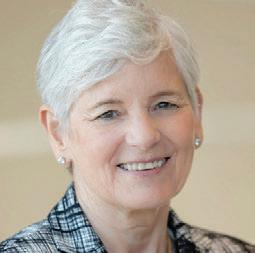

Register today: inclusion.iicf.org
For sponsorship please contact Betsy Myatt at emyatt@iicf.com or (917) 544-0895
Chris De Santis
An independent organizational behavior practitioner, speaker, podcast host of Cubicle Confidential, and author of “Why I Find You Irritating: Navigating Generational Friction at Work.” He has developed a framework for understanding generational perspectives, explaining when it makes sense to talk about these differences and when it doesn’t.
Jon Macaskill
A Navy SEAL Commander turned mindfulness and meditation teacher. Macaskill has served in Iraq, Afghanistan, off the coast of Somalia and in Panama. His consulting business brings mindfulness and mediation to high performing teams dealing with stress, anxiety, and depression while increasing focus, creativity, and productivity.


Join us for the in-person return of our industry-leading Global Conference, where hundreds of exceptional insurance professionals of all ages and stages will convene for an action-oriented program with a unique focus on leadership and an inclusive future for the industry. Learn more at: inclusion.iicf.org
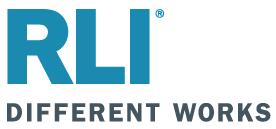
Thank you to our earliest 2023 Sponsors




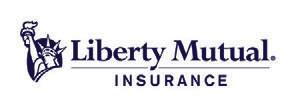



Diamond Sponsor Sponsors

Register today!
Figures
The number of employees, former employees and family members that have sued Springdale, Arkansas-based Tyson Foods, alleging it failed to take appropriate precautions at its meat-packing plants during the early days of the COVID pandemic. In the lawsuit filed in Pulaski County Circuit Court, the plaintiffs said Tyson’s negligence and disregard for its workers led to emotional distress, illness and death. Several of the plaintiffs are the spouses or children of Tyson workers who died after contracting COVID.

$23.8 Million
The amount vaping company Juul Labs will pay Chicago to settle a lawsuit alleging the company marketed products to underage users. The Chicago Department of Public Health will use the money for youth prevention and reduction programs, education and outreach, according to a city press release. The company agreed to pay $2.8 million within 30 days and the rest later this year, the statement said.

The number of gun companies ordered to stop selling or distributing unfinished or unserialized gun parts used to assemble untraceable “ghost guns” to consumers in New York. An injunction granted by U.S. District Judge Jesse Furman in Manhattan reflects a deal reached between the gun companies and N.Y. Attorney General Letitia James while the AG’s broader lawsuit against ghost gun sales under state law continues. The impacted gun distributors are Brownells Inc., Blackhawk Manufacturing Group (80 Percent Arms), Salvo Technologies Inc. (80 P Builder or 80P Freedom Co.), G.S. Performance LLC (Glockstore), Indie Guns LLC, Primary Arms LLC, Arm or Ally LLC, Rainier Arms LLC, KM Tactical LLC, and Rock Slide USA LLC.

$54 Million
The amount of an alleged workers’ compensation fraud scheme to which Wesley Owens, 54, and Beau Wilson, 38, both of Atlanta, Georgia, pleaded no contest in California. The two were charged with multiple felony counts of insurance fraud and conspiracy following a California Department of Insurance investigation. Owens owned and was the CEO of Bison Workforce Solutions, a professional employer organization based outside Atlanta, which provided outsourced workers’ comp insurance, human resources, payroll, tax and other services.

10 | INSURANCE JOURNAL | APRIL 3, 2023 INSURANCEJOURNAL.COM
10
34
Declarations
Opioid Fight

“The Justice Department is using every tool at our disposal to confront the opioid epidemic that is killing Americans and shattering communities across the country.”
— Attorney General Merrick Garland said after the U.S. government sued Rite Aid Corp., accusing the pharmacy chain of missing “red flags” as it illegally filled hundreds of thousands of prescriptions for controlled substances, including opioids. In a complaint filed in federal court, the Department of Justice said Rite Aid repeatedly filled prescriptions from May 2014 to June 2019 that were medically unnecessary, for off-label use, or not issued in the usual course of professional practice.
Confidential Confessions
“A priest faces excommunication if he discloses the communication made to him during confession. … And the sacramental seal of confession is the worldwide law of the Catholic Church, not just the diocese of Burlington, Vermont.”

— Bishop Christopher Coyne told the Vermont Senate Judiciary Committee that the church is opposed to a bill that would remove an exemption from Vermont’s child abuse and neglect reporting laws. Clergy are currently not required to report potential evidence of such crimes if they learn of it in confidence while acting as a spiritual advisor.
Ohio Train Terror
“I kind of kept myself under control, told my kids, ‘OK, guys, we have to leave.’ … The only thing I knew was I had to get my kids to safety. Take just the necessary things and get out of there.”
— Heather Bable said, recalling the terror of the night when a train loaded with hazardous chemicals derailed less than a half-mile from her home in East Palestine, Ohio. She heard an earthshaking boom and, from her bathroom window, “all you saw was the flames.”

Louisiana Commissioner Retiring
“I’ve

made that decision for two reasons:
The first is to remove politics from the vitally important upcoming legislative session where many significant issues are affecting our state and the future of our state’s property insurance market will be debated and hopefully decided to improve that market. … The second reason is that I am obviously 78 years old and have spent almost 50 years serving the public of Louisiana. While very healthy and continuing to exercise, I want to enjoy the remaining years of my life with my family and hopefully some new hobbies.”
— Louisiana Insurance Commissioner Jim Donelon announced that he will not run for reelection this fall, marking an end to 17 years as the state’s chief insurance regulator.

Forest Service Distrust

“The U.S. Forest Service admitted fault, but we have a long way to go before they regain the trust of New Mexicans. … This letter requests that the (Forest Service) clearly explain what they plan to change to prevent another grave error like this. Our lands, forests, waters and communities cannot afford anything less, and our people deserve it.”
— U.S. Rep. Teresa Leger Fernández of New Mexico said in a statement after members of New Mexico’s congressional delegation sent a letter to Forest Chief Randy Moore looking for assurances from the U.S. Forest Service that it is taking preventative measures to ensure that future prescribed fires don’t turn into disasters. The largest wildfire in state history, sparked last year by a Forest Service prescribed burn, charred more than 530 square miles of Rocky Mountain foothills, destroying homes and livelihoods.
Florida Windshield AOB Bill
“Any attempt by a policyowner to enter into such assignment agreement is void and unenforceable.”
— Reads Florida’s House Bill 541, which was approved by the House Banking and Insurance Committee. The bill would ban assignment-of-benefits agreements for windshield repairs, a measure that proponents hope will stem a flood of litigation aimed at insurers.
APRIL 3, 2023 INSURANCE JOURNAL | 11 INSURANCEJOURNAL.COM
P/C Carriers Losing Ground to MGAs in Talent War
By Susanne Sclafane
During a webinar about an insurance industry labor market survey, an industry recruiter said insurance carriers are losing ground to managing general agents in the war for talent.
“On the property and casualty side, primarily in the commercial space, it’s been MGAs [that] are really growing very very quickly and very substantially, and they’re taking a share of the employee market as they continue to grow [and] become a bigger factor in the commercial business,” said Greg Jacobson, chief executive officer of The Jacobson Group, as he and Jeff Rieder, partner at Aon and head of Ward Benchmarking, reported the results of the Semi-Annual U.S. Insurance Labor Market Study published by the two firms.
Jacobson made the observation as he explained why insurance carrier employment figures from the U.S. Bureau of Labor Statistics, while rising, have not quite made it back to a record level achieved in 2020.
“There are two primary reasons why we haven’t reached the highest levels — and they don’t really have anything to do with planned reductions in staff,” Jacobson said. Instead, carriers are having difficulty keeping up with turnover “primarily as it relates to retirements.” In addition, “we’re
also seeing more and more employees go to alternative employers,” he said, referring to MGAs.
Later in the webinar, Jacobson reviewed results of the survey, including a question which asked insurance carrier respondents (85% of which were from P/C carriers) to assess the difficulty they are having in filling 11 types of positions, ranging from technology to claims to operations to executives. As in recent prior surveys, every category remains difficult to fill, the survey found. In other words, respondents assessing their hiring struggles on a 10-point scale, assigned scores of 5 or above, on average, for every type of insurance job.
But even the hardest-to-fill jobs — in technology and actuarial areas — had lower scores than last year. “It is absolutely getting easier [to fill jobs] within the context of still being really difficult,” said Jacobson.
There’s one exception, however. Underwriting positions are getting slightly tougher to fill, according to survey respondents, Aon Ward’s Rieder noted. “We’ve seen, particularly for the commercial line segment, a notable challenge for companies to fill positions, and that tends to be an area where companies have also seen more poaching of talent,” he said. In addition, he said, other surveys — surveys about compensations — reveal greater increases in pay for underwriters, particularly in entry and intermediate roles “as
companies are again poaching talent from other organizations.” Therefore, it was hardly surprising that underwriting bucked the overall trend of declining placement difficulty.

“And there are alternative employers of choice for individuals to work for, especially in the commercial lines underwriting space,” Rieder said, again offering MGAs, as well as startups and traditional regional and super regional carriers getting into specialty markets as examples.
Reviewing the responses to a related question — which asked what functions carriers are most likely to try to fill this year — Rieder noted sharp (full-point or more) year-over-year reductions in scores for technology, analytical, actuarial and operations. There were no similar drops for the front office roles for underwriting and claims. “The core activities for insurance around claims and underwriting still remain very very much in high demand,” Rieder said.
Explaining the declines for back office functions, he said that for many clients his firm works with “there has been an emphasis on overall expense reduction, particularly as there’s been some economies of scale ... being achieved during the virtual work environment.”
While the industry’s greatest need across all types of insurers still remains technology staffing, P/C personal lines
12 | INSURANCE JOURNAL | APRIL 3, 2023 INSURANCEJOURNAL.COM News & Markets
carriers rank their hiring aspirations for claims professionals ahead of technology professionals. Rieder pointed to the loss frequency and severity challenges in personal lines to explain the results, also noting that personal lines carriers took some reductions in force in their claim staff when the pandemic brought those claims metrics down — either through a reduction of force or a pause in hiring.
“That appears to have come full circle. We also see generally higher levels of turnover, particularly into those entry level claims activities,” he said.
Reductions Unplanned
More recent reductions in staffing for all types of P/C and life/health carriers have been unplanned, Jacobson reiterated at one point during the webinar in response to an audience member who asked why insurers are not hitting hiring targets. Is it “entirely driven by the inability to find suitable new employees?” they asked.
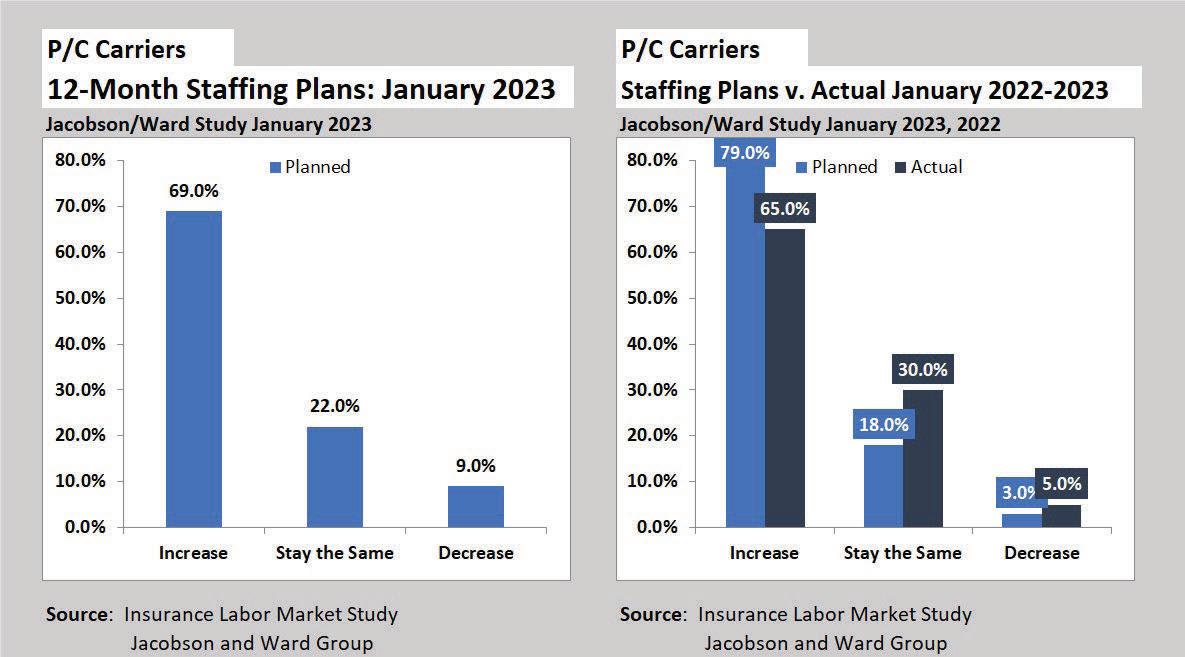
“That’s exactly right. That’s absolutely what’s happening,” Jacobson said. “The reason why the industry has less employees than it did two years ago is not because the industry intended to reduce jobs. It’s because there are more open jobs.”
In fact, last January, 79% of P/C carriers surveyed had indicated that they intended to increase the size of their workforces in 2022. A year later, only 65% reported that they actually did.
In addition, while only 3% said they planned to decrease staff a year ago, that
figure is up to 9% for 2023. Across all types of insurers, the percentage intending to decrease staff jumped from 3% in 2022 to 10% in 2023. Rieder and Jacobson said that this change is probably indicative of concerns about economic volatility.
For the first time in the 14-year history of the survey, Aon and The Jacobson Group have tabulated figures on voluntary and involuntary turnover within the industry. Jacobson said that historically, insurance is one of the lowest turnover industries in the economy, but that has changed. In the last 12 months, the voluntary turnover (individuals choosing to leave on their own including retirements) was 11.1%, while involuntary turnover (people who are let go) was 3.6%, for a total turnover rate of 14.7%.
On a positive note, “that started to come back to close to pre-pandemic numbers over the last six months,” Jacobson said, reporting that the figures dropped to 8% for voluntary turnover, and 2.8% for involuntary turnover for the second half of the year. Still, “overall this is considerably higher turnover than the historical norm from the insurance industry, and most of that probably is related to just the way employees view their relationship with their employer over the course of their career,” Jacobson said.
Back to the Future
As carriers try to keep ahead of voluntary turnover, they are more willing to fill in entry level ranks, especially in
back office operations roles — and even in underwriting.
In total, carriers said that 27% of positions are expected to be filled with entry level staff, up from 22% reported from the prior survey in July 2022. While actuarial and operations functions remain the most likely to be filled with entry level personnel, right behind them in the latest survey is underwriting, with carriers surveyed in January 2023 saying that 38% of their underwriting positions are entry level — up from just 16% in July 2022.
“Companies are beginning to invest more in classes — hiring groups of underwriting and client entry level positions out of college. That might be a class of 8-10 individuals,” Rieder reported, noting that by doing this semiannually, carriers intend to keep this pool of talent growing while replenishing those lost through elevated levels of turnover.
“For many of the tenured insurance individuals that grew up in the 80s and 90s, it was very much commonplace to see large classes.” But that type of activity “was cut by many organizations or turned down” in 2009 and the early 2010s, after the recession. “Now, we’re seeing a reemergence,” he said.
Paying for Talent
Asked specifically about industry pay scales, Rieder said that going into 2022, merit increases were anticipated to come in around 3.5%, but materialized to be a little bit closer to 4%. And for some organizations, there were 4.5% jumps. Jacobson, noted that the Bureau of Labor Statistics actually shows year over year increases in compensation of about 6%.
“The difference between the 4% merit raises and the 6% total that we’re seeing from the BLS is for most part due to the higher end of people from outside of an organization. It’s more expensive to hire people from the outside than it is to retain your employees. So we were seeing some significant jumps in salaries as a result of people leaving and going from one organization to another,” Jacobson said.
APRIL 3, 2023 INSURANCE JOURNAL | 13 INSURANCEJOURNAL.COM
Sclafane is the executive editor of Carrier Management. Email: ssclafane@carriermanagement.com
News & Markets
Louisiana Supreme Court Reverses, Finds No Coverage Owed for COVID Shutdown
By Jim Sams
The Louisiana Supreme Court has joined state high courts across the nation in rejecting a policyholder’s business-interruption claim for income lost because of government restrictions imposed to slow the spread of COVID-19.
The high court on March 17 reversed the Louisiana Court of Appeals and reinstated a trial court decision that found the virus did not cause a direct physical loss to the Oceana Grille, a seafood restaurant in the heart of New Orleans’ French Quarter.

“Oceana never repaired, rebuilt or replaced any property that was allegedly lost or damaged,” the 5-2 opinion says. “While we are sympathetic to the immense economic challenges faced in responding to the pandemic, we cannot alter the terms of an insurance contract under the guise of contractual interpretation when the policy uses unambiguous terms.”
Cajun Conti, owner of the Oceana Grille, filed the first lawsuit in the country seeking insurance coverage for a COVID-19 shutdown. The company’s attorney, John Houghtalling III, had the ear of President Donald Trump, who said during a press conference that he thought claims by restaurants that purchased all-risk policies without virus exclusions should be paid.
But an Orleans Parish judge, like most courts that considered the question, ruled that the virus did not cause a direct physical loss that required coverage by an all-risk commercial property insurance policy.
The Louisiana Court of Appeals, however, reversed the decision in a 3-2 ruling. The Lloyd’s of London syndicate that issued Cajun Conti’s policy appealed to the Supreme Court.
The high court rejected arguments that prior decisions finding that coverage was owed for a property con-
taminated by lead dust and properties that required restoration after the installation of defective Chinese drywall set precedents that favored coverage.
“Oceana’s property was not physically lost in any tangible or corporeal sense,” as required for coverage under the policy, the majority said.
Justices Jefferson D. Hughes III and Piper D. Griffin dissented.
“Like smoke from a fire next door that did no physical damage to the premises, but caused the business to be closed until the odor could be removed and the business cleaned, a physical loss occurred,” Hughes said in a short dissenting opinion.
Only one state high court has ruled in favor of a policyholder seeking coverage for a COVID-19 shutdown.
The Vermont Supreme Court reversed a trial court decision to grant summary judgment against a dental practice and in favor of an insurer, but did not make a final decision on the merits of the case.
At least 19 state high courts have ruled in favor of insurers and rejected coverage, according to a litigation tracker managed by the University of Pennsylvania.
Sams is the editor of Claims Journal. Email: jsams@claimsjournal.com.
14 | INSURANCE JOURNAL | APRIL 3, 2023 INSURANCEJOURNAL.COM
WCRI: Consolidation of Health Care Driving Up Prices in Work Comp
Consolidation of physician services into larger groups owned by hospitals and health care systems is driving up the cost of care in workers’ compensation, according to a new study by the Workers’ Compensation Research Institute (WCRI).

“Medical markets are increasingly concentrated,” said John Ruser, WCRI president and chief executive officer, in a statement. “This means that patients are more likely to be treated by physicians at sites owned by hospitals and health systems. This raises a policy concern that the increasing concentration of medical providers may lead to higher payments for medical care without corresponding improvements in patient outcomes.”
The study found that from 2012 to 2018 the percentage of physicians practicing at sites owned by hospitals or health systems increased to 49% from 32% for primary care physicians, and to 35% from 18% for orthopedic surgeons.
This “vertical integration” of the industry increased the average payment per procedure by 8% overall, or $29 per procedure. But costs increased more in states that don’t use fee schedules to regulate prices charged for treating injured workers. In those states, payments per procedure increased an average of $91 because of vertical integration, the study says.
WCRI said the study, conducted by researchers Bogdan Savych and Olesya Fomenko, is the first to study the cost of vertical integration in workers’ compensation.
The study said most of the increase in costs was driven by changes in the frequency and mix of services provided, known as utilization. Vertical integration increased the price of each procedure provided by only 2%.
The study says a substantial amount of research has found that fewer physicians are employed in sole practice and more are employees of health systems and hospitals. Advocates for consolidation say it leads to more frequent use of best practices and better coordination of care, but skeptics say that consolidation reduces competition and leads to higher prices for medical care.
WCRI, looking specifically at primary care physicians who treat injured workers, found that more than 44% were in sole practice in 2012 and only 31% were in sole practice in 2018. For orthopedic surgeons, the share in sole practice declined from 41% to 27% during that period.

In the meantime, the share of primary care physicians employed by hospitals and health systems climbed from 33% to
49%, and the share of orthopedic surgeons working for hospitals and health systems climbed from 18% to 35%.
The WCRI researchers found the cost of vertical integration varied largely by location and type of provider. The study found the impact of consolidation was greatest in states without fee schedules.
Vertical integration in those states led to 12% increases in payments per procedure, 14% in payments per service type and an 11% increase in payments per day of care. For states with fee schedules, vertical integration led to payment increases ranging from 7% to 9% in each category.
“We can expect that when a state has a fixed-amount fee schedule, there are fewer opportunities for vertically-integrated providers to affect prices,” the study says. “However, prices may be more responsive to changes in the market power of providers in states without fixed-amount fee schedules.”
The study did not include any information on whether the higher prices charged led to better outcomes for workers’ compensation patients, but suggested more research is needed in that area.
APRIL 3, 2023 INSURANCE JOURNAL | 15 INSURANCEJOURNAL.COM News
& Markets
Business Moves
Burns & Wilcox, McIntyre & Associates
Burns & Wilcox has signed a definitive agreement to acquire McIntyre & Associates, a Ruston, Louisiana based managing general agent.
The deal is expected to close early in Q2 2023.
Family owned for two generations, McIntyre is a wholesale business with significant commercial lines expertise, including contractors, lessors risk, restaurants, special events and commercial packages, among other areas.
Originally founded by Bill McIntyre in 1988, the company is now led by McIntyre’s son-in-law Bart Dugdale.
East
NSM
Pennsylvania-based insurance program specialist NSM Insurance Group has completed its acquisition of three businesses that specialize in the field of medical stop loss insurance and managed care insurance.
The firms are Sequoia Reinsurance Services in Minnesota, and IOA Re’s two divisions, Rockport Benefits in Massachusetts and Insurance Resources and Auditing Services in Pennsylvania. Rockport and IRAS are subsidiaries of ELMC Risk Solutions in New York, a portfolio company of private investment firm J.C. Flowers & Co.
Bill McKernan, president of NSM, called the firms “high-performing companies with a proven track record of profitability.”
Richard Fleder is CEO of ELMC; John Parker is president and CEO of IOA Re; and Dan Bolgar is president and CEO of Sequoia Reinsurance Services. Rockport Benefits is co-led by managing directors Amy Argeros and Heidi Herlihy.
Carlyle purchased NSM from White Mountains last August.
NSM has more than $1.5 billion in premium across more than 25 specialty insurance programs and brands in the U.S. and UK. Its programs focus on collector cars; pets; social services and behavioral health; addiction treatment; coastal condominiums; towing and garage; trucking; sports and fitness; professional liability for contractors, architects and engineers; habitational; staffing; and workers’ comp.
Midwest
Arthur J. Gallagher, SBP
Arthur J. Gallagher & Co. acquired Fort Wayne, Indiana-based Stewart, Brimner, Peters & Company Inc.
SBP is a retail insurance broker offering a variety of commercial and personal insurance products along with employee benefits consulting to clients in central and northern Indiana.
Jason Brimner, John Brimner, Jeff Peters, Mick Stewart and their team will remain in their current location under the direction of Sean Gallagher, head of Gallagher’s Great Lakes region retail property/casualty brokerage operations.
South Central
ALKEME, NAPA Insurance Center
ALKEME announced the acquisition of the NAPA Insurance Center, an Austin, Texas-based insurance agency that provides health and property/casualty insurance to NAPA’s independently owned auto part stores and auto care centers nationally.
Founded over 30 years ago, the NAPA Insurance Center has been serving the NAPA family through business insurance, flood insurance, group healthcare, individual healthcare, personal insurance and life insurance offerings.
Based in Ladera Ranch, California, and backed by GCP Capital Partners, ALKEME serves thousands of clients with a wide range of offerings including P/C, benefits, surety, risk and wealth management.
Dugdale will join Burns & Wilcox as associate managing director and report to Bonnie Steen, vice president and managing director for Burns & Wilcox Louisiana and Arkansas.
Southeast Keyes
Keyes Coverage, a rapidly growing Florida insurance brokerage, has acquired three firms: Bill and Sheila Gaylor Insurance, based in Melbourne, Florida; My Florida Insurance Broker, in Vero Beach; and Brian Laudanno Insurance in Coral Springs.
It’s part of a plan to continue growing the Keyes firm in 2023, the company said.
The Gaylor agency has been serving the Space Coast area for more than 30 years, offering personal and commercial lines products. My Florida Insurance has been in business for some 15 years in Martin County. Laudanno has offered health and property/casualty insurance in south Florida for two decades.
Principals and employees of those agencies will remain on board, Keyes said.
Keyes has been in business in south Florida since 1975, specializing in in corporate P/C coverage and in personal lines. It has more than 80 employees in its office building in Tamarac, Florida.
Keyes is part of the Keystone Agency Partners brokerage platform.

16 | INSURANCE JOURNAL | APRIL 3, 2023 INSURANCEJOURNAL.COM
AJG, Benson
Arthur J. Gallagher & Co., the global
insurance brokerage and consulting firm, acquired Nashville-based Anderson Benson, a retail insurance brokerage and risk management firm.
Anderson Benson, founded in 2012, has carved out a niche in the entertainment industry, along with hospitality, construction, transportation.
Principals George Anderson, Reno Benson, Brent Daughrity, Steve Buzzell, Will Wright and their team will remain in their current location under the direction of Bumpy Triche, head of Gallagher's MidSouth retail property/casualty brokerage operations.
Arther J. Gallagher, a publicly traded firm, is headquartered in Rolling Meadows, Illinois, and offers services in 130 countries.
Relationships Matter, Flowers
Less than eight months after two of Alabama’s oldest insurance agencies
merged to create the Where Relationships Matter Group, the group has taken on another agency with offices in the southeast part of the state.
WRM Group announced that it has inked a merger agreement with Flowers Insurance Agency, which has offices in Dothan, Eufala and Phenix City.
Flowers’ Managing Partner Shane Sinquefield joins Haig Wright II and Lin Moore as managers of the expanded WRM Group.
Flowers will operate under its own name and employees will continue at their respective offices.
Flowers provides commercial insurance, surety and bonding, employee benefits solutions, personal and life insurance.
WRM was formed last summer when Byars/Wright Insurance and PritchettMoore Insurance merged. Both firms were more than 75 years old and have offices around the state.
West Reliance, Truck Team Insurance
Reliance Partners acquired the assets of Truck Team Insurance in Salt Lake City, Utah.
Truck Team Insurance owner Brent Tate will join Reliance Partners’ team as vice president of sales. He has more than 20 years of commercial insurance experience, and founded Truck Team Insurance five years ago. Truck Team Insurance is an insurance brokerage providing commercial trucking insurance in 23 states.
Reliance Partners is a commercial insurance agency with locations in Chattanooga, Tennessee; Birmingham, Alabama; Chicago; Austin, Texas, Tempe, Arizona; Milwaukee, Wisconsin, Sacramento, California; and Tampa, Florida, with a national client base largely concentrated in the transportation and logistics space.
APRIL 3, 2023 INSURANCE JOURNAL | 17 INSURANCEJOURNAL.COM We’re the quickest. Standalone personal umbrellas issued the same day. Discover the unexpected at PersonalUmbrella.com Admitted carrier, rated A XV by A.M. Best For licensed insurance agents Available nationally. Underwriting criteria varies by state. Visit us online for guidelines. A.M. Best rating e ective 03/23. For the latest rating, visit ambest.com. California Insurance License 0D08438
People







National
Tracy Ryan will join the Allianz Global Corporate & Specialty SE board of management as chief regions and markets officer for North America.
Based in New York, succeeds William (Bill) Scaldaferri who has decided to leave Allianz after 23 years, 11 of which were as a member of the board of management.
Ryan previously was at Liberty Mutual Insurance Group where she was a board member and president, Global Risk Solutions North America, having served in a variety of technical and leadership roles over nearly 30 years.
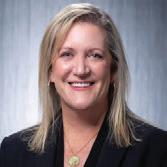
AXA XL Insurance continues to build out its U.S. Mid-Market business with the addition of Bennett Turner as head of strategy and operations and Christopher Fallon, head of analytics.
Turner joins AXA XL from Liberty Mutual, where he most recently served as a senior director for casualty and specialty lines analytics. He has nearly 20 years of extensive experience in the property/ casualty and financial services industries.
Fallon also joins from Liberty Mutual, where he most recently served as a senior director for casualty and specialty lines analytics.

Turner and Fallon are based in Boston.
East
Wayne Gearhart has been promoted from vice president of claims to senior vice presi-

dent and chief operating officer of Hartford Mutual Insurance Group, headquartered in Hartford, Connecticut.
Gearhart brings nearly 30 years of insurance industry experience to the new position. He joined Harford Mutual in 2019 as assistant vice president of claims and was promoted to vice president of claims in 2021.
Additionally, Geneau Thames has been promoted from assistant vice president, general counsel, and corporate secretary to vice president, general counsel and corporate secretary. Thames has served as Harford Mutual’s in-house counsel since 2015.
The MEMIC Group, headquartered in Portland, Maine, hired Karen Kyer as a new senior production underwriter in the Mid-Atlantic region.
With more than 20 years of experience helping independent agents write monoline workers’ compensation policies in Virginia and Maryland, Kyler specializes in multiple product lines as an adviser to her agency partners.
Managing general agent GMI Insurance (GMI), headquartered in Phoenixville, Pennsylvania, appointed Shawn Hall Sr. as chief operating officer and chief revenue officer.
Before Hall’s appointment at GMI, he served as senior vice
president and managing director of workers’ compensation/ regional vice president at Breckenridge Insurance.
Also, Kelly Kelly joins GMI as administrative manager.

Midwest
Valley Insurance Agency Alliance (VIAA) hired Brett Weis as personal lines coach. He will work with VIAA’s development team and coach new and existing team members on best practices for all property/ casualty insurance issues.

Weis has worked in the insurance industry for nearly 10 years. Before joining VIAA, he served as a personal lines department manager at an independent insurance group serving doctors nationwide. VIAA is based in Clayton, Missouri.
Chicago-based Ryan Specialty promoted Michael VanAcker to executive vice president of RT Specialty, Ryan Specialty’s wholesale brokerage and binding authority specialty.
VanAcker has over 10 years of experience at Ryan as chief operating officer of Ryan Specialty and before that as RT Specialty’s chief operating officer and controller. He also served as director, FP&A, and manager in finance and accounting.
Frankenmuth Insurance
Senior Vice President Phil McCain will retire on June 2 after 37 years of service and leadership.
McCain started at the Frankenmuth, Michigan-based company as a programmer in 1986. He serves as Frankenmuth’s ethics officer, is a member of the corporate executive committee and is responsible for disaster recovery and corporate planning. During McCain’s tenure, Frankenmuth Insurance integrated Patriot Insurance Co., a subsidiary of Frankenmuth Insurance, into its business processes.
Upon McCain’s retirement, Curtis Williams, director of technical services, will be promoted and appointed vice president of information technology.
J.M. Wilson, based in Portage, Michigan, hired Jennifer MikosBenavides as assistant transportation underwriter in its Arlington Heights, Illinois, office.

Mikos-Benavides is responsible for assisting underwriters with new and renewal commercial transportation accounts, as well as maintaining relationships with carriers and independent insurance agents in Illinois, Iowa, and Wisconsin.
Prior to joining JM Wilson, Mikos-Benavides worked in banking and commercial loans for over 20 years.
Omaha National Group Inc appointed Dale Mackel chief

18 | INSURANCE JOURNAL | APRIL 3, 2023 INSURANCEJOURNAL.COM
Tracy Ryan
Wayne Gearhart
Geneau Thames
Shawn Hall Sr.
Brett Weis
Jennifer MikosBenavides
Phil McCain
financial officer.
Mackel joins Omaha National after two years as executive vice president and chief financial officer and treasurer with LHC Group, a publicly traded home health and hospice provider based in Lafayette, Louisiana.
Bryan Connolly, who previously served as chief financial officer, has been promoted to chief operating officer.
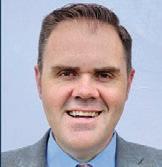

South Central
Marine Underwriters of America, a DOXA Insurance company and underwriter of ocean marine, inland marine and related properties, hired Dustin Goodwin as head of the new marine claims program.
Marine Underwriters is headquartered in Conroe, Texas.
Goodwin brings over 27 years of experience in complex claims management, having held leadership positions at top companies in the industry, including senior director at Fidelis Claims Service and senior claims adjustor at CNA Ocean Marine.

Goosehead Insurance Inc. made several leadership promotions, including the appointment of Matthew Hunt as vice president, agency operations.
Hunt began his career with Goosehead in 2010 and has played an instrumental role in opening new markets across the country.
Goosehead, headquartered in West Lake, Texas, also promoted four new managing directors across various departments.






Chelsea Donner has been promoted to managing director of the service department. Donner launched Goosehead’s
San Antonio, Texas, service center in August 2021 and will now lead the San Antonio office. She began her career with Goosehead in 2017.
Dericka Marshall-Dillon has been promoted to managing director of human resources. Marshall-Dillon oversees both the HR and payroll departments. She joined Goosehead in 2013.
Johnny Preston has been promoted to managing director, human capital development. Preston is responsible for improving agent productivity across the company’s franchise and corporate channels. He has been with Goosehead since 2008.
Silver Burney has been promoted to managing director of corporate sales in Fort Worth, Texas. Burney will oversee Goosehead’s Fort Worth and San Antonio markets and will continue his role in recruiting, training and growth in both the corporate and franchise channels. He joined Goosehead in 2016.
Southeast David Altmaier has moved from overseeing regulation of insurance companies to overseeing operations for one — the Bermuda-based reinsurer Aspen Insurance Holdings. Altmaier, who was Florida’s insurance commissioner for six years until he stepped down in December, has been named to the reinsurer’s board of directors.
Aspen Insurance Holdings Ltd. houses a number of reinsurance and insurance
subsidiaries with operations on four continents. These include Aspen Bermuda Ltd.; Peregrine Reinsurance Ltd.; Silverton Re; Aspen Re America; Aspen American Insurance Co., which offers medical malpractice, inland marine, and other property insurance; and Aspen Specialty Insurance Co.
McGriff, a subsidiary of Truist Insurance Holdings, hired Greg Draddy for its Carolinas specialty risk team.
The company said Charlotte is an emerging flagship operation and Draddy will help drive further growth in the region.
He has more than 20 years of experience in commercial insurance, including the last eight in Charlotte with global brokerage firms.
West Venbrook Group LLC, based in Woodland Hills, California, promoted Brenda Sherman to executive vice president of business development and strategic alliances.
A Venbrook executive since 2015, Sherman has more than 30 years of industry experience across both the carrier and program administration sides.
In the newly created role, she will ramp up business development initiatives and work with agency partners to source alternative distribution channels.
Before joining Venbrook,
Sherman held roles at AIG, Tokio Marine, Liberty Mutual, and others. She is based in Southern California.

PCF Insurance Services in Lehi, Utah, named Jenni Lee Crocker president.

Crocker was PCF’s senior vice president, growth and operations for the past year. She will remain on the board of directors at PCF after completing her two-year tenure as a board member.
Crocker has more than 27 years of experience. Before joining PCF in 2022, she spent more than 10 years at Marsh as managing director and corporate leader for the mid-Atlantic region and Virginia office head.
Leavitt Group in Cedar City, Utah named Kevin P. Grady as chief legal officer and Brooke L. MacNaughtan chief people and community officer, a newly created role.
Before joining Leavitt Group, Grady was vice president and deputy general counsel at Monat Global Corp.
MacNaughtan has been with Leavitt Group for 20 years, and she most recently served as VP of travel, meetings and incentives. Her new role encompasses employee experience and travel, meetings, incentive trips and recruiting client service staff.

APRIL 3, 2023 INSURANCE JOURNAL | 19 INSURANCEJOURNAL.COM
Greg Draddy
David Altmaier
Brenda Sherman
Kevin P. Grady
Jenni Lee Crocker
Brooke L. MacNaughtan
Closer Look: Cyber Insurer Startup Trium Cyber Finds Path to Profits, With Large Business Focus
level of contraction in terms of the loss caps available in reinsurance treaties.”
By L.S. Howard
Trium Cyber is the industry’s first Lloyd’sapproved company to provide mono-line cyber coverage for U.S. risks. Launched in January 2023, the full stack surplus lines insurer has joined the ranks of new entrants to the cyber market and those existing carriers that have expanded their market share over the past year.
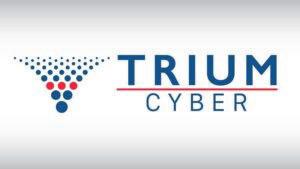

While it’s an attractive prospect as premiums have skyrocketed, rates more recently have begun to moderate. Indeed, cyber insurance pricing increases moderated to 28%
What’s in a Name?
The name Trium Cyber has Latin roots. Trium is the inflected form of trēs (or three), according to the company’s website.
The insurer said it provides three essential components to support its insureds, and more broadly, promote market stability and the effective management of cyber risk:
• Proprietary underwriting methodology
• Comprehensive risk management capabilities
• Real-time loss mitigation services
in the fourth quarter of 2022, compared to 48% in the third quarter as new entrants to the market increased capacity, according to Marsh’s Global Insurance Market Index.
Nevertheless, Josh Ladeau, CEO of Trium Cyber, isn’t worried that the new capacity will again drive prices down to unsustainable levels because cyber underwriters are very aware of the possible systemic exposures and need to keep rates above the cost of risk.
“The market has really shifted. I don’t think it’s just a temporary rate correction. There is an acknowledgement across carriers and reinsurers that the rate levels of a few years ago were not sustainable and would give us significant difficulty if there are major industry cyber events,” Ladeau said in an interview with Insurance Journal.
“There will be some price fluctuation over the year, but I think there is enough understanding of the aggregate nature of the exposure, as well as the frequency and severity of attritional claims.”
Even at the reinsurance level, there has been a significant pullback, as concerns over aggregate exposure grow, he said. “Reinsurers have looked to cap losses at a lower attachment level. So even as you see the direct insurance portfolios growing, there has been some
Ladeau noted that industry players are very aware that rampant growth and over-competition isn’t healthy, especially given the spike in cyber loss ratios in 2020, he emphasized.
“Despite top-line growth over the years, the cyber insurance market has experienced significant challenges at all points of the value-chain,” said Trium Cyber on its website.
According to Swiss Re, a main driver of cyber insurance market growth has been rising frequency and severity of cyberattacks, which have raised awareness of the risk. “In the U.S., the largest cyber market, premiums grew by 74% in 2021. Standalone policy premiums increased 92%, driven by rate increases after ransomware incidents led to a spike in loss ratios in 2020,” said Swiss Re in its report, titled “Cyber insurance: strengthening resilience for the digital transformation,” published in November 2022.
Swiss Re said the cyber market has immense growth potential because most losses are uninsured. “Given estimates of annual global cyber losses at US$945 billion [according to a report from McAfee], nearly all of the risk remains uninsured,” said Swiss Re, noting that one estimate from the Geneva Association puts the protection gap at 90%.
Focus on Larger Insureds
Unlike some of its competitors that prefer covering smalland-medium-sized enterprises (SMEs), Trium Cyber focuses on large businesses with more than $1 billion of revenue, with robust security postures.
“Historically speaking, that has served us very well in terms of performance relative to the industry,” Ladeau said.
In the large market segment, there is a greater emphasis and investment in security and their IT redundancies — or their ability to use secondary and tertiary solutions in the event they have a cyber incident, he said.
“Some businesses have the ability to run their systems offline, allowing them to maintain business operations even during an outage,” he said. And some organizations have multiple layers of redundancy, so if a major provider goes down, “they can fail over to an additional provider.”
On the other hand, small businesses — SMEs — are one of the more difficult areas in the market today, he cautioned. “I don’t know if there’s yet enough rate in the small business line. Obviously, time will determine whether that’s the case.”
Smaller businesses with homogenous networks, standard tools and systems, and much less investment in security technologies are more likely to be affected if there’s a systemic or aggregated event, he said.
20 | INSURANCE JOURNAL | APRIL 3, 2023 INSURANCEJOURNAL.COM
Many of these smaller companies do not employ a chief information security officer (CISO) and have outsourced their IT and IT security, he continued. Their knowledge and control over their cyber security is likely to be less than it is for the middle market, while the middle market, in turn, also has less rigorous controls than large market customers, he said.
In addition, there are a lot more SMEs than Fortune 1000 companies. As a result, if the limits are aggregated across all those smaller businesses — which in the U.S. number in the millions — the cost would be much higher than for the Fortune 1000 companies — even with the higher limits purchased by big companies, Ladeau added.
“As you move upstream and get into the large market on any individual risk, there is more loss potential on that account, on an individual account basis, because they buy higher limits.” That potential downside is more than offset by stronger controls and established redundancies, supporting segment profitability, he explained.

Swiss Re estimates that the total claim arising from a cyber-incident targeting an
SME is in relative terms three times more than for large corporations, with forensic costs typically ranging from $20,000 to $100,000 for a firm with turnover of less than $50 million.
Downstream Exposures
In the underwriting process, downstream technology dependencies are examined closely — because they can create exposure to systemic events. “We develop an understanding about who is reliant on what technologies and to what degree they’re reliant, and then we position our book around that.”
One notable example of downstream aggregated exposure can be found within the airline industry. Ladeau said about 40% of airlines use one type of booking technology, or at least have that technology as one of their core components for booking, which increases the aggregation potential.
“But shared dependencies like this can be found across various industries such as healthcare and financial institutions,” he said.
Individual risk selection involves assessment of a customer’s security posture, system redundancies, event
response and disaster recovery capabilities and downtime procedures, he explained.
“With our relatively narrow underwriting focus and stringent risk selection criteria, I do feel, from a loss perspective, we have some level of insulation.”
As a veteran cyber underwriter, Ladeau knows what he’s talking about. “The only line I’ve ever written is cyber,” he said. “I’ve always been focused on the profitability of my line of business, and I’ve been able to write sustainably profitable business over the last 15 years, including the last three or four challenging years.”
After joining the startup in September 2022, he helped Trium Cyber navigate the Lloyd’s approval process to become the industry’s first monoline cyber syndicate, Syndicate 1322.
Previously, he led the global cyber platform for Aspen, and prior to that role, he was practice lead for Allied World where he developed the company’s cyber risk platform.
About Trium Cyber
Writing on behalf of Lloyd’s Syndicate 1322, using Lloyd’s “A”-rated, surplus-lines paper, Trium Cyber has the support to write as much as $50 million in gross premiums in the cyber market for 2023.
An excess-only carrier that provides cyber and technology errors and omissions cover, the company can take up to a maximum line of $10 million,
and will regularly deploy a $5 million line, bringing approximately $1.5 billion of new capacity to the U.S. market.
Trium Cyber uses its own proprietary underwriting methodology, real-time claims platform and complimentary cyber risk management services.
Ladeau said the company differentiates itself by being able to make underwriting and claims decisions in the U.S., which is particularly important for cyber where real-time loss scenarios are common.
This is different than third party liability or professional liability claims where claims are resolved in weeks, months or even years, he said.
“In cyber, oftentimes you’re dealing with that claim within hours of an event happening. Being able to get involved immediately with the claim is an important factor. Being U.S.-based in a time zone closer to our distribution partners and clients is a really important differentiating factor of what we do,” Ladeau added.
“The syndicate only writes through the one binder for the U.S. operating company. There is no open market business written out of London.”
While Trium Cyber might eventually provide European coverage, Ladeau said, for 2023 and for the foreseeable future, it will remain focused solely on U.S.-domiciled risks.

The company is backed by Pelican Ventures and third-party capital providers.
This profile of Trium Cyber is the inaugural article in a regular series of Company Spotlights, published by Insurance Journal, which cover the insurance industry’s startups and innovators.
APRIL 3, 2023 INSURANCE JOURNAL | 21 INSURANCEJOURNAL.COM
Josh Ladeau
Spotlight: Insuring Cyber Experts Urge Empathy, Thoughtfulness for Insurers in Challenging Cyber Landscape
By Elizabeth Blosfield
While the continuously evolving cyber threat landscape is a growing problem for insurers, experts say it’s not an insurmountable one, and empathy and thoughtfulness will be key as insurers seek to tackle it.
“The part that sometimes is a little bit frustrating for me is seeing when insurance companies are sort of throwing up their hands and saying, because it’s a difficult problem, it’s an impossible problem,” said Madhu Tadikonda, CEO of Corvus Insurance. “I don’t think that really has much empathy for our commercial clients and policyholders.”
Tadikonda’s comments come after Zurich CEO Mario Greco said in a December 2022 interview in the Financial Times that he believes cyber threats are in danger of becoming uninsurable.
In a widely reported quote from the interview, he said
he believes the growing sophistication and scale of cyberattacks is putting them at risk of becoming uninsurable and questioned what the consequences would be if a cyber criminal takes control of vital parts of U.S. infrastructure.
In a recent episode of The Insuring Cyber Podcast, he said, “first off, there must be a perception that this is not just data … this is about civilization. These people can severely disrupt our lives.”
A representative from Zurich wasn’t available to comment at the time of this podcast, but Greco’s comments come amid growing concern about the cyber threat landscape and the pressure it’s putting on insurers.
The cyber insurance sector has been tested recently with growing ransomware attacks and rising premiums. However, a 2022 Cyber Insurance Market Trends report from Panaseer found that isn’t necessarily
scaring insurers away.
“Despite the considerable pressures, our research shows it’s not enough to make insurers exit the market,” the report said, finding that even if the current rate of cyberattacks remains the same, 84% of respondents said they’d continue to offer cyber insurance over the next three years.
This sentiment was echoed by experts on this podcast episode, who added that helping customers navigate a challenging cyber landscape should be insurers’ first concern.
these are the ways insurance companies are trained and built to think about things.”
Tim Francis, enterprise cyber lead at Travelers, agreed, adding that the insurance industry is armed with a lot more data and knowledge about cyber now than it has had in the past.
To listen to the full podcast with Madhu Tadikonda and Tim Francis visit, https://www.insurancejournal.tv/videos/21355. Be sure to watch for new episodes of The Insuring Cyber Podcast publishing every other Wednesday along with the Insuring Cyber newsletter.

To subscribe, visit https://www.insurancejournal.com/subscribe.
“Whether we think it’s insurable or difficult or whatnot, it is a very real risk that our customers are worried about,” Tadikonda said. “They talk about cyberattacks in their boardrooms. The CEOs of companies get very tough questions about how they’re weighing investments in software and services and how their insurance works together in a risk management solution … I think that would be a real miss if we didn’t respond to something our customers really care about and are worried about, especially given that
“I think that over the last couple of years, we’ve actually learned a lot,” he said. “So, cyber certainly is a challenging space. It’s going to be a challenging space and if there was anyone that thought otherwise, that would be the wrong thought process to bring to this. But I think done with thought, done with care, certainly cyber is a space that that can be managed.”
He went on to say that he not only believes cyber is a risk that can be managed by insurers, but that it’s incumbent upon the insurance industry to do so as technology continues to advance.

“The reality is that we’ve got customers that use technology and use data and are going to continue to use technology and data in all sorts of new

22 | INSURANCE JOURNAL | APRIL 3, 2023 INSURANCEJOURNAL.COM
Madhu Tadikonda
Tim Francis
and innovative ways over the next several years and in the future,” he said. “I think it’s incumbent upon our industry to help them understand their risks, their exposures, and to create insurance products that can help transfer some of that risk. Not without concern, but thoughtfully. I think that there’s certainly a way that can be done.”
Tadikonda said one of the ways insurers can do this is by harnessing data and sharing that knowledge to educate policyholders about their cybersecurity.
“We’ve got a very rich database of incidents and claims and how that links back to what policyholders or customers looked like before an attack,” he said. “And we



have real valuable advice and information for policyholders about which of the investments they can make, which ones reduce frequency and severity, and which ones make them most resilient.”
The challenge, of course, is that the threats are changing all the time.
“Certainly in cyber, what happened in the past, while informative, helpful, useful for sure, is sometimes less predictive for cyber than maybe looking back at that data would be in other lines,” Francis said. However, Tadikonda said insurers will simply need to adapt to a faster paced environment, relying on not only data, but early predictions and a little bit of intuition, to stay ahead. “If you waited two
years for things to appear in the actuarial tables, it might be too late,” he said. “So sometimes, you have to base things on cybersecurity data, good intuition, early results of things, seeing what emerging attacks are, even if there aren’t necessarily insurance claims on the web.”

Francis said that as the cyber insurance industry evolves, he’s noticing a market shift as many carriers who stepped back from the risk initially are now more confident in the space since they have a better handle on it.
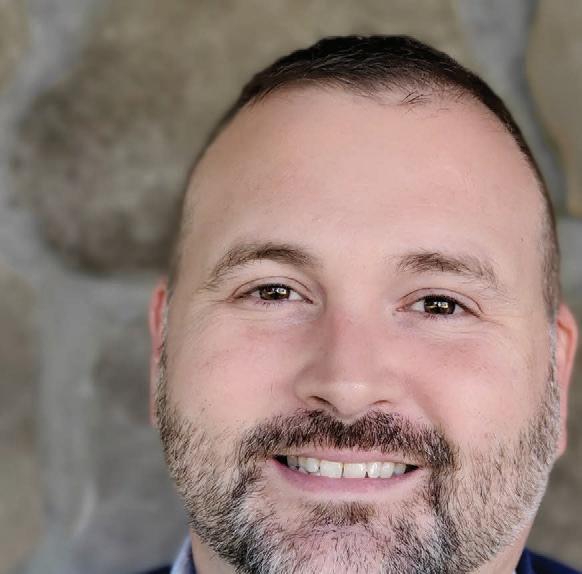
“I think this is actually a great time to be a buyer of cyber insurance,” he said. “I think when the ransomware trend was at its worst, a lot of carriers battened down the

hatches and said ‘We’re going to require a higher standard of cybersecurity with our customers.’”


This meant customers who didn’t have robust cybersecurity measures in place could have difficulty finding coverage or could be paying significant prices, he said. “That was just the nature of the risk,” he said. “I think carriers have kind of come out of that frenzy, and what we’re now seeing is not less underwriting standards, but the ability to have those customers that maybe don’t have ideal standards be able to connect with risk professionals that can help them.”

APRIL 3, 2023 INSURANCE JOURNAL | 23 INSURANCEJOURNAL.COM Thanks to Stephen for the kind words and thank YOU for reading. Our journalists take pride in serving the industry. If this publication is valuable to you, please consider upgrading your subscription at www.insurancejournal.com/pro
publication to keep me informed &
“Great
on top of my game.”
IJHOUSE16700 half.indd 1 6/2/20 4:14 PM
Stephen Peters - Producer at Hamrick Insurance Services & Satisfied Insurance Journal Subscriber
Blosfield is the deputy editor of Carrier Management. Email: eblosfield@ wellsmedia.com.
Spotlight: Drone Course
Exploring the Dos and Don’ts of Drones, Insurance-Wise
By Jahna Jacobson
Drones are an increasingly popular hobby for adults and kids.
And it’s all fun and games and cool videos until something glitches, and an out-of-control rack of spinning blades hits someone in the head. Or crashes into a house.
The potential for drones to cause injury and property damage raises questions about what types of activity are covered by existing insurance and whether drone hobbyists or professionals should have specific insurance that covers drones, and whoever or whatever gets in the way.
Kevin Amrhein, president of the Florida Insurance School of Continuing Education and the CE partnership, has answers for insurance professionals who can expect to see an increase in drone coverage conversations as the use of drones for fun and profit continues to grow. He outlined some need-to-know information for insurance professionals in his Insurance Journal Academy of Insurance course, Insuring Drones (Because Humans Do Dumb Things with Them).
What Not to Say About Drones
Insurance professionals need to know the limitations of what they should discuss with clients or advise clients when it comes to drones, Amrhein said.
“Lots of folks will ask you questions throughout your tenure as an insurance professional — ‘Hey, can I do this with my drone? Can I do that with my drone?’” Amrhein said. “And I think we as
insurance professionals need to be confident enough to be able to say, ‘There are rules. You are responsible for the rules.’”
Rather than presenting “yourself to your insureds as the end-all-be-all of drone regulations,” he said. “I think it’s probably more in your interest to present yourself to your insureds as the insurance expert.”
For example, what if a client wants to know whether they can charge a fee to take pictures of groups with their new drone?
“If you were asked that question, as an insurance agent how would you respond to that?” Amrhein said. “Do you feel like that’s a question that you are supposed to answer?”
Taking pictures may instinctively seem like a low-risk venture, but in this case, it’s the payment that will trip up coverage and change the rules, Amrhein said.

“If you are charging for the use of a drone, it’s no longer considered recreational use,” he said. “There are separate rules about commercial use, and this is now commercial use. Lots of separate rules, including what kind of certifications are required and what you have to do to get those things.”
Regardless of professional status or skill, drone operators need to follow regulations. The best place to start learning is at the federal level, said Amrhein. He recommends insurance professionals and drone operators study the rules on the Federal Aviation Administration site, www.faa.gov. Drones are aircraft and subject to the same regulatory authorities as
other aircraft on federal, state and local levels, he said. It’s up to operators to know and follow the regulations in their area, whether they are flying for personal enjoyment or professional pursuits.
“You better know what you’re talking about,” Amrhein said. “Or I would say steer the conversation back to, ‘That’s a great question. I’m only going to talk to you about insurance.’”
Personal Drone Use Coverage
When it comes to personal, recreational drone use, com-
mon concerns are bodily injury claims and property damage claims, Amrhein said.
“Liability is the insurance you cannot go without,” he said.
From a liability standpoint, all the ISO (Insurance Services Office Inc.) forms have the same language, and the definition of aircraft liability is very comprehensive, Amrhein said. “If you were to read this definition, your takeaway would be pretty much anything you do with a drone or somebody else does with your drone is going to be a problem for you. It’s
24 | INSURANCE JOURNAL | APRIL 3, 2023 INSURANCEJOURNAL.COM
going to trigger the definition of aircraft liability.
“Now, why does ISO define aircraft liability? Do you think it’s because they want to cover it? No,” he said.
“When we have specifically defined terms in policies like this, it’s generally because we want to limit or exclude coverage,” Amrhein said. “And if we’re going to limit or exclude coverage, we have to be very clear, unambiguous as to what it is we don’t want to pay for.”
However, in defining aircraft liability, ISO adds its own interpretation of what aircraft is, Amrhein said. It essentially says that aircraft means any
contrivance used or designed for flight, except model or hobby aircraft not used or designed to carry people or cargo.
“Well, what about most recreational drones?” Amrhein said. “Well, by definition, a drone doesn’t carry people. We know that. What about cargo? Can drones be manufactured to carry cargo? Sure. Are there drones that are built for that purpose? Yes.
“Is a typical recreational drone that you would buy on Amazon or buy at Best Buy for your son or for your daughter, or for yourself for recreational purposes, maybe to take some video? Is that thing designed to
carry cargo? No.”
Amrhein said it creates a give-back in the exclusion because the aircraft liability exclusion can’t be used to remove coverage if the drone isn’t aircraft.
“The exclusion is very clear in the policy. It says we don’t cover aircraft liability. But what did we tell you? In the definition of aircraft, liability doesn’t include drones.”
However, as drones have become more common, insurance is adapting. It’s important for those seeking and selling drone coverage to be specific in their requests, to read all the policy information and to double-check endorsements for exclusions that apply to model or hobby aircraft.
“If there’s an exclusionary endorsement added to the homeowner’s policy, some carriers for a premium will remove that,” Amrhein said. “So, it’s incumbent on us to determine if the policies that we have sold have been modified to remove liability coverage.”
Personal injury, for example, is not specifically addressed in an unendorsed homeowners policy, Amrhein said.
“In the ISO world, personal injury coverage is added by endorsement. Now, it’s very, very common that personal injury coverage would be included. A lot of carriers are going to include personal injury coverage, and if it’s required to be added by endorsement, they’re going to add the endorsement,” he said.
Commercial Drones
Commercial drones are used for photography and surveillance in a wide range of industries, including construction. They are also used
for tasks such as delivering packages or spraying crops.
“If the drone is being monetized and there is a claim filed against the insured,” Amrhein said, “even if we have an unendorsed policy that has no concern with drone liability, if it’s being used for business, remember that the word business brings an entirely new set of concerns to the table.”
He noted, again, that the “ISO commercial property policy says it includes drones or, in this case, aircraft on its list of property not covered.”
Anyone using a drone for their business should ensure they have the right liability coverage, he said.
The good news is that businesses that only use drones occasionally don’t have to pay a full term of premiums; they can seek out endorsements for specific projects or operations, he added.
Because commercial drones are typically larger, more powerful and more extensively equipped, they are usually more expensive — some costing tens of thousands of dollars. This makes insuring the drone a bigger issue.

“Having adequate insurance on the drone itself is going to require some type of equipment policy or specialty policy,” Amrhein said. “So, and for a premium, you’ll find markets that will do it.”
Amrhein also discusses the brief history of commercial drone use, insuring drones, liability for privacy violations, and more in the course, which is available on-demand through the Academy of Insurance at https://www. ijacademy.com. Live and on-demand courses are free for academy members.
APRIL 3, 2023 INSURANCE JOURNAL | 25 INSURANCEJOURNAL.COM
Regardless of professional status or skill, drone operators need to follow regulations.
Heavier Vehicles, Distracted Drivers Impacting Claim Severity
in 2018 and Atlanta moved to 10th place from 11th.
The number of vehicle miles driven, surpassed during pandemic lockdowns, now exceeds pre-pandemic levels. Trucks, especially, are driving farther. Both freight trucks and commercial light trucks make up a larger share of the vehicles driven. Continued growth in e-commerce is expected to drive growth in the number of miles driven by commercial trucks, the report says.
Consumers are also tending to choose heavier vehicles. More than 80% of new vehicle sales were light trucks in 2022, up from just under 50% in 2013.
By Jim Sams
U.S. roadways are carrying heavier, more powerful vehicles operated by motorists who are older, driving faster and more often distracted, according to CCC Intelligent Solutions’ annual Crash Course report.
Each of those factors has a bearing on the frequency and severity of personal auto claims. The report says that frequency was rebounding from pandemic lows in the fourth quarter of 2022. The percentage of vehicles that were non-drivable after crashes was higher than in 2019 and 2020, a sign of increased severity.
“When it comes to cars on the road, post-pandemic drivers are driving faster and more distracted than ever. The result is accidents with greater severity,” the report says. CCC said claim counts increased 3.7% in 2022 from 2021, while overall non-comprehensive claim counts increased 3.6%. Compared to 2019, overall claim counts were still 7.6% below 2022 numbers, while overall non-comprehensive claims remained down 11.4%.
The Crash Course report draws from a wide range of sources to detect auto claims trends. The changing demographics of
the United States population, a shift in commuting traffic patterns precipitated by the pandemic and the evolution of automotive technology are among the data points included in CCC’s analysis.
The nation, as a whole is growing older — in part because both birth rates and immigration are lower than previous levels. The median age was 38.8 years in 2021, up from 35.4 in 2000 and 32.9 in 1990.
Drivers, of course, are older as well. Older drivers tend to have fewer accidents, the report says, but if they are injured treatment tends to be more complicated because of a greater propensity for pre-existing conditions.
A shift to remote work prompted by the COVID-19 pandemic continues to alter traffic patterns from historic norms. Traffic congestion is returning to pre-pandemic levels. According to the 2022 INRIX Global Traffic Scorecard, traffic delays exceeded pre-pandemic levels in 116 out 295 U.S. urban areas, or 39%.
Much of those traffic jams have shifted to the south. Miami is now the fifth-most congested city in the nation, up from 12th in 2018, according to INRIX. Houston moved to a ninth-place ranking from 13th
Trucks and sports-utility vehicles are also heavier. According to the US Environmental Protection Agency, the average weight of passenger vehicles on the road increased from 3,200 pounds in 1981 to 4,300 pounds in 2021. The average weight of SUVs increased 7% from 1990 to 2021; the average truck weight increased 32% during that time.

The report says crashes in heavy vehicles lead to more severe claims, both for property damage and bodily injury. Modern vehicles are also more complicated than previous generations of automobiles, another factor that drives claim severity.
In the meantime, supply chain disruptions have made automotive parts more expensive and a labor shortage spurred in part by the aging population makes trained technicians in short supply. Each of those factors tends to increase claim severity.
The toll on human lives may be the most significant outcome of changing driving preferences and habits. CCC says that traffic fatalities on urban roads and streets increased 34% between 2010 and 2019.
During the first nine months of 2022, there were an estimated 31,785 motor vehicle fatalities in the United States, down slightly from a peak of 31,850 during the same period in 2021.
26 | INSURANCE JOURNAL | APRIL 3, 2023 INSURANCEJOURNAL.COM News & Markets
Sams is the editor of Claims Journal. Email: jsams@claimsjournal.com.












News & Markets
Third Time’s a Charm for Nevada’s Captive-Focused Insurance Commish
By Don Jergler
Scott Kipper’s list of LinkedIn experiences runs 14 items long, but that’s not so much him bragging. He’s moved around a lot in a career that stretches back more than 30 years.
He could have just left off some of the less important experiences, but it would be difficult for him to pick which ones to axe.
Three experiences are as Nevada’s insurance commissioner, showcasing an unprecedented third stint. Kipper’s first go as commissioner was from 2008 to 2010. He was appointed again in 2011, holding the office through 2015.
Another on his long list of experiences is as deputy commissioner in the Office of Health Insurance in Louisiana, a role he held twice. He also served as insurance administrator at the Oregon Insurance Division from 2007 to 2008.
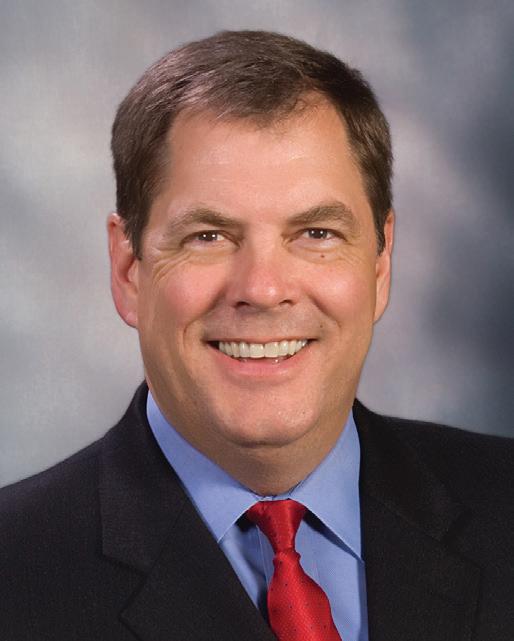
In between his previous stint as Nevada’s insurance commissioner, he ran his own consulting company and worked in executive positions in compliance and government relations at three firms.
He most recently served as the deputy director of operations for the State of Washington Office of the Insurance Commissioner.
Almost as striking as his long list of experiences is the nomadic life the 66-year-old has lived. Born in Nebraska, raised in Wyoming, Kipper has lived in 11 states – a few of those were multiple residences.
Kipper was appointed to his third stint as insurance commissioner in late February by Nevada Department of Business and Industry Director Terry J. Reynolds, placing him over an industry with $22 billion in written premium and more than 1,600 carriers licensed to conduct business in the state. His appointment to head the DOI was made following the resignation of Barbara Richardson, who served in the role since 2016.
Kipper’s previous tour as commissioner was highlighted by a push to bring more
captives to the state, resulting in more than $4 billion in captive premiums by 2014, toward the end of his time in the role.
Making Nevada a captive capitol, and finding deeper meaning in his work, were among the reasons he said he headed back into public service over a year ago, and eventually back into his old role as commissioner.
Kipper found that he missed public service, and after years of private consulting, he grew less satisfied with his work compared with his time in the public sector.
“You know you’re, well, I wouldn’t say a hired gun, but you’re working for companies that, generally, they don’t hire you unless they have a problem. Right?” he said. “You know, some of it was good work, and some of it was a real challenge.”
When he went back to work as a deputy commissioner last year for Washington Insurance Commissioner Mike Kreidler, who Kipper has known for 20 years, he found his “passion for public surface service” hadn’t subsided.
“Public service is a big incentive for him,” Kreidler said. “And I think it is for many of the people who serve as insurance commissioner and people who work in commissioners’ offices.”
Both men share the public service passion and have a distinction among the nation’s insurance commissioners.
Looking back through records from the National Association of Insurance Commissioner, it appears Kipper is the only commissioner to hold the post three times for the same state (excluding people’s stints as interim insurance commissioner or a deputy).
Kreidler is the nation’s longest serving insurance commissioner, and he’ll be
heading into his 24th year when his terms ends. The 80-year-old says he’s unlikely to seek reelection.
Kipper’s first challenge is finding warm bodies. “One of the effects of the pandemic and one of the challenges that we’re facing here, which is not really a regulatory issue, but is one of finding enough qualified staff to do the work that we need,” he said. “In Washington, I think that the vacancy rate was 15% to 17%, and we’re seeing that here, and regulators across the country are also saying that it’s been a challenge finding enough qualified staff.”
Third Time’s a Charm
Kipper has a blue-collar way about him. He speaks plainly in a relaxed tone, and one would be hard-pressed to find a hint of “I” or “me” in most of his comments. Also absent are terms like “my insurance department,” or efforts to point to his track record.
People seeing him for the first time back in town again after a few years’ absence stop him and ask him what he’s up to, and they’re likely to get a dose of his humble humor.
“I was telling somebody this the other day, they said ‘Oh, you’re back again?’ I said, ‘Well, I’m gonna keep trying to do this until I get it right.’ But I’m not sure what that necessarily is. I don’t know what I would do differently,” he said.
Seconds after recalling the story, he followed up by immediately talking about his interest in bringing more captives to Nevada.
In 2022, the state counted 155 active captives accounting for $482.3 million in premiums, according to the Nevada Division of Insurance. That’s down from a peak of 201 captives in 2017. While total premiums were at a high last year, the
continued on page W4
W2 | INSURANCE JOURNAL | APRIL 3, 2023 INSURANCEJOURNAL.COM
Nevada Insurance Commissioner Scott J. Kipper


We Seal the Deal Professional Liability: D&O, EPLI, Misc E&O, Medical Professions, Legal Malpractice, Accountants, Media Liability, A&E, Technology, Cyber MonarchExcess.com Burbank 818-249-0100 / Fresno 559-226-0200 / Rancho Mirage 760-779-5555 / San Diego 619-521-2170 / Simi Valley 805-577-6800 San Marcos 760-891-2811 / Arizona 877-406-8026 / Hawaii 818-425-9847 / Miami, FL 305-569-6734 / Lic. #0L09546
News & Markets











number of captives has steadily fallen in the last five years, DOI figures show.
Nevada is considered one of the country’s oldest captive domiciles and was consistently among the states with the highest number of captives. Competition for captives and the premium taxes they

can generate have heated up in recent years.

“Most states now have a captive program,” Kipper said. “You know, we need to reevaluate and make sure that Nevada is still a very attractive domicile, and if not, what we need to do to is get us back in the forefront.”
Auto Rates/Cannabis
His other goals include getting personal auto rates under control, and facilitating insurance for growing or emerging industries, like cannabis.
“You know, our personal auto rates have certainly caught the attention as being relatively high or at least have increased a great deal over the last five or six years,” he said.



The last time he was commissioner, voters in Nevada had yet to legalize cannabis.
“You know, this has come so far in the time since I was here last, I’m really excited about the possibilities of risk management when it comes to the cannabis industry and new and better ways for them to manage that risk,” he said.













Kipper covered a few other items on his to-do list, and when pressed for what he’d do differently in his third stop at commissioner, he drew on his blue-collar humility and offered a folksy analogy.
“It would be like different words to a verse in the same song,” he laughed. “So does that make some sense? You know, we still have all the basics that we have to do. We still have consumer services that hasn’t changed much. We still have to work with the administration and the Legislature, and that hasn’t changed –much different issues, but it’s still the same process. There’s always going to be vacancies in state government, no matter how hard you try. We can become more creative in trying to attract talented individuals to the Division of Insurance. So that really hasn’t changed, but it’s just variations on how we do things and, and variations on that language in the song.”
That philosophy may explain way he’s returned as commissioner for a third time. Could it lead to Kipper singing variations on the same song for perhaps a fourth time at some point in the future?
Probably not. This is likely to be his final tune and the last stop in a long and winding tour in insurance regulation. “It’s probably gonna be the old commissioner’s retirement home,” he said of his next post. “That’s probably what it’s gonna be.”








W4 | INSURANCE JOURNAL | APRIL 3, 2023 INSURANCEJOURNAL.COM 2023 JM Wilson Insurance Journal .indd 4 1/11/23 11:10 AM
continued from page W2
My New Markets
Bakeries, Bagel Shops, Coffee Shops
Market Detail: Coterie Insurance writes GL and BOPs for bakeries, bagel shops and coffee shops. The only pre-fill, small commercial experience on the market means we answer our own underwriting questions. Get a bindable quote in seconds based on two pieces of information: business name and address. We micro small businesses, start-ups and new businesses.
Available Limits: Not disclosed.
Carrier: Spinnaker Insurance Co., Benchmark Insurance Co. and Clear Spring Insurance, rated A-(Excellent).
States: Available in all 50 states plus District of Columbia.
Contact: John Poucher, john.poucher@ coterieinsurance.com, 855-566-1011.
Per-Load Cargo Insurance
Market Detail: RockLake Insurance Group offers all-risk, domestic and international coverage with automated claims to freight brokers, shippers and carriers. This perload insurance coverage can be quoted in 40 seconds or less and is accessible anywhere. We use advanced analytics for smart pricing, incorporate anti-fraud tools, and utilize a digital and app-based process for claims. Policy pays regardless of the shipper’s ability to prove carrier negligence, pays for losses outside of carrier’s controls, and pays the shipper for the full value of the lost/damaged goods. Has pen; appointment required.
Available Limits: Up to $2 million for any single mode of transport and $100,000 for LTL.
Carrier: Non-admitted, rated A. States: Available in all 50 states plus District of Columbia.
Contact: Trish Stineman, trish.stineman@ rlig.com, 972-954-9413.
Cannabis Commercial Auto (including HNOA)
Market Detail: Cannasure Insurance Services offers a comprehensive commercial auto insurance solution to the cannabis marketplace. Available coverages: $1 million max auto liability limit; PIP, medical payments, UM/UIM (prefer rejected or state minimum); physical
damage; hired and non-owned. Targeted classes: Approved radius and size classes business use — retail and commercial; retail — autos used for distribution of industry property from dispensaries for home delivery (“B to C”); autos used for transporting industry property from one cannabis/hemp operation to another (“B to B”). Radius: Local (up to 50 miles); intermediate (51-200 miles); long distance (Over 200 miles). Size class: Private passenger vehicles; light trucks (0-10,000 lbs. GVW); medium trucks (10,001-20,000 lbs. GVW); heavy trucks (20,001-45,000 lbs. GVW); extra heavy trucks (over 45,000 lbs. GVW); heavy truck tractors (0-45,000 lbs. GVW); extra heavy truck-tractors (over 45,000 lbs. GVW); semi-trailers; trailers; service or utility trailers (0-2,000 lb. load capacity). Has pen; appointment required.
Available Limits: $1 million max auto liability limit.
Carrier: Rated A by AM Best. States: Available in all 50 states plus District of Columbia.
Contact: Jim McErlean, jmcerlean@ cannasure.com, 602-363-6652.
Neptune Flood
Market Detail: London Underwriters offers Neptune Flood, an online rater where you can quote and bind residential and commercial flood directly online. Features: No elevation certificate required; online rate/bind; residential up to $4 million dwelling value; commercial up to $10 million building value. Appointment required.
Available Limits: Up to $4 million dwelling value; commercial up to $10 million building value.
Carrier: Various, non-admitted, rated A by AM Best.
States: Available in all 50 states plus District of Columbia.
Contact: Daniel Feigenbaum; procession@ londonuw.com; 866-245-5197.
Non-Emergency Medical Transport Program (NEMT)
Market Detail: Cardigan General Insurance Services (CGIS) has access to national markets, underwriting and program design expertise. In partnership with
a select distribution channel of agents, our underwriters provide innovative solutions to the most complex insurance needs. Program highlights: Non-admitted paper in most states unless required to be admitted paper; one-unit accounts acceptable; new ventures considered (prior experience required); minimum driver age is 23 with two years’ experience. Require GL/PL to include loading/unloading with the following minimum limits: Medical vehicles — $50,000; Wheelchair vehicles — $100,000/$300,000; Gurney vehicles — $250,000/$500,000. Payment plan — all accounts need to be premium financed. Eligible vehicle classes and operations: Wheelchair-assisted vans, ambulettes, and gurney vans; non-emergency ambulance operations; basic life support vehicles (non-911); adult daycare transportation providers; contracted transportation providers. Auto liability up to $1 million limits; physical damage — stated amount. General liability/professional liability is required. Quote available through in-house brokerage operation.
Available Limits: Auto liability up to $1 million limits; physical damage — stated amount.
Carrier: Admitted, non-admitted, rated A-VIII by AM Best.
States: Arizona, California, Colorado, Connecticut, Delaware, Georgia, Illinois, Maryland, Minnesota, New Jersey, New York, Ohio, Pennsylvania, Tennessee, Virginia, Washington.
Contact: Mark Jatczak; mjatczak@cardigangeneral.com; 800-992-6648.
This section brought to you by Insurance Journal's sister website:
www.mynewmarkets.com
APRIL 3, 2023 INSURANCE JOURNAL | 27 INSURANCEJOURNAL.COM
Need a Market? Find It. FAST
Hard Commercial Property Market to Linger as Property Owners Take On More Risk
By Chad Hemenway
Today’s hard U.S. commercial property insurance market — one that is the longest and toughest seen during the careers of even the most seasoned industry veterans — is likely here to stay for a while.
“This is the hardest property market we’ve seen in 20 years,” said Scott Purviance, chief executive officer of Amwins.
“I’ve never seen any like this hard market,” added Nancy Woode, head of the U.S. property team at McGill and Partners.
Not uncommon for the marketplace to be shaped at least in part by natural catastrophes, this time it has been weathering a storm of a different kind — a convergence of factors including reinsurance, inflation, valuation adjustments, and claims costs has left it in rebuild mode, still wary of reversing an upward trend in insurance rates that has lasted for five or six years.
The loss environment over the last five years has seen “huge volatility,” not just from hurricanes and tornadoes, but from severe convective storms, winter freezes, flooding, wildfires, mud slides, straightline winds, and man-made losses (fires, water damage, civil commotion), added Derek
“All these factors in terms of creating a loss environment has been very challenging for insurers so rates continue to rise” as the industry chases profitability with adequate pricing to match increases in losses and exposure, he said.
From 2012 to 2017 there was one catastrophe loss of $10 billion or more. In the next five years there were nine such losses, explained Purviance.
In years past, events would temporarily jar the commercial property insurance marketplace but there were always new entrants — new capital — to keep a buyer-friendly market intact even after an event such as 2012’s Superstorm Sandy, according to Mark McEvoy, property practice leader at Woodruff Sawyer. Then the 2017 hurricane season churned up destructive storms Harvey, Irma and Maria (often referred to together as a market event called “HIM”).
“This was a catalyst,” said McEvoy. Insurers realized they were not earning enough to pay losses and turn a profit.
Some high-profile insurers disappeared from certain classes or started to reduce limits. There was no influx of new capital. Carriers began increasing rates.
“Because some carriers were re-underwriting their portfolios and retracting limits, many large property programs needed to be restructured, causing a shift from single-carrier placements to quota-share or shared and layered programs,” McEvoy said of the time.
Emerging in the meantime was a still often-repeated word or phrase: valuation and insurance-to-value (ITV). Leading up to 2017, there was pressure among carriers to grow portfolios in softer market conditions, and the emphasis on valuations was lost. Carriers have recently realized ITV was off 30% or more, according to market reports. Deficiencies became much more apparent as losses came in at multiples more per square foot than had been expected.
“There has been a pretty big difference between what was on the schedule and what the actual loss is,” Talbott said.
Supply chain and limited availability of building materials following the pandemic, as well as inflation, exacerbated the problem. Accurate ITV figures were maintained by some clients but ignored by others.
“In a benign inflationary environment, maybe that was okay, and it was tough for an insurer to say it was wrong — there was not a lot of traction
on that,” said Talbott, recalling different market conditions.
He added that clients and brokers have “done a good job pushing the importance” of ITV recently.
ITV is “the driver by which everything starts — probabilistic models, attachments points, pricing,” said Scott Pizzi, WTW’s head of property broking for North America. “If you get that wrong from the beginning, all the outputs will be incorrect, too.”
Insurers are “much, much more focused” on valuations today, said Purviance. The ITV focus, which reached another gear about a year ago, is “not going away any time soon,” added Michael Rouse, U.S. property practice leader at Marsh.
“There’s not a renewal we go into where there is not a discussion on valuation — how the client is determining the value of buildings, contents, equipment, inventory and business interruption,” Rouse said of current conditions. In today’s market, most carriers have a process to help clients validate replacement costs, he added.
In cases without a wealth of information, “carriers will often think the worst and err on the side of caution,” Rouse said.
The thought going into 2020 was that the market could
28 | INSURANCE JOURNAL | APRIL 3, 2023 INSURANCEJOURNAL.COM
Special Report: The Real Estate Issue
Talbott, Chubb Group division president for North America property and specialty lines.
potentially stabilize, according to McEvoy, but then COVID struck, and that year’s hurricane season set a record as the most active for named storms.
COVID claims, many dealing with whether physical damage occurred, were filed in droves. Shutdowns of the court system lengthened claims resolutions.

However, the “straw that broke the camel’s back,” said Purviance, came with Hurricane Ian last year, just several months before the January 1 reinsurance renewals. Treaty renewals were the most challenging in decades as capacity tightened and rates and retentions increased.
Ian “enabled reinsurers to come into January 1 and extract some material rate and term changes,” Purviance said.
The reinsurance market “had not been pushing for rate to the same extent as the primary insurance market,” added McEvoy.
The result has been beleaguered brokers and distressed buyers as insurers pass some of the increased reinsurance costs to insureds. Insurance programs have needed heavy restructuring.


“We’ve been delivering a lot of tough messages,” Woode said. “Every renewal is different — every market.”
Capacity at renewal is down for Woode’s clients from $5 million to $1.5 million-$2 million, for example. Purviance said carriers that once offered a layer of coverage at $25 million limit are now down to $5 million-$10 million, even $2.5 million.

“You have to shop the market with every account,” Purviance said, adding that the market has become somewhat bifurcated — catastrophe-exposed and non-cat; good and bad risk; admitted vs. non-admitted. He said wellbuilt risks with a good history in a non-cat zone are not seeing the 20%-30% increases the
cat-exposed accounts are seeing.
Clients with a lack of loss history — attritional or severity — are seeing “a better result in this market,” at least in comparison to the opposite account, which may be facing significant rate increases, sometimes multiples of their expiring premiums, said Marsh’s Rouse. Even clients with a good loss history but have issues with ITV and have predominate exposure in a cat-exposed area could see “a reset on what the cost of capital is.”
Pizzi of WTW reported benign accounts with accurate ITV, a low cat footprint, and good engineering could still see increases of 10%-20%. A client of contrast is staring at increases of possibly 25%-100%.
Brokers said some clients are forced to buy less limit and retain risk with higher retentions, reinsuring portions out, using captives, self-insurance, co-insurance of certain layers, or higher deductibles.
“Almost everyone is taking more exposure,” Purviance said.
All brokers said many more carriers are generally involved on a program. For instance, Pizzi said one large account went from 45 to 67 insurers on the program, with no change to the insured’s limits. Excess or buffer layers between primary and excess are the most problematic to place, they said.
“It’s an opportunistic write, especially on challenging accounts,” Woode said. “A lot of time it’s out of the underwriters hands.” The observation was shared by Pizzi, “It’s a premium game rather than an underwriting game.”
continued on page 31
APRIL 3, 2023 INSURANCE JOURNAL | 29 INSURANCEJOURNAL.COM
Special Report: The Real Estate Issue
Risk Management Considerations for Condo Association Boards
 By Patrick Wraight
By Patrick Wraight
The condo association takes on a special level of responsibility because of the unique form of ownership that is the condominium. To make sure we are all on the same footing — a condominium is a form of ownership where a person (in the broadest possible sense) purchases a unit within a building. By purchasing the unit, they also buy their spot as co-owner of the entity that owns the entire property, whether it is a single building or a group of buildings, including their appurtenant structures (the clubhouse, pool houses, pools, etc.), the condo association.
The association elects a board of directors. The board acts on behalf of the unit owners to conduct the business of the association. This allows business to be done without the need to bring the body of owners together to make decisions. That exposure creates the need for the board to have directors and officers liability (D&O) insurance in place.
D&O insurance provides coverage for the decisions of the board and the individual members of the board.
Consider the Surfside Condominium collapse in June 2021. The evidence to date suggests the collapse was due at least in part because of deferred maintenance to the building. Deferred maintenance is a fancy term that means that they haven’t taken care of the building as they should have. The association board was made aware of repairs that the buildings needed, and they chose not to start on those repairs because of the cost associated with them.
There are other decisions that boards have to make, from hiring lawn maintenance contractors to handling the association’s funds to purchasing insurance for the association’ various exposures. All of these decisions can lead to a D&O exposure.
While it seems like it would be impossible to reduce the chance of a D&O claim to zero, it is possible to reduce the chances, and to mitigate the impact of the claim, if filed.
Validate Board Members
In order to best manage the risks of a D&O claim, the association should start at the source of potential D&O issues and that is with the board members. Each member, and potential member, of the board should be required to submit to some degree of scrutiny. Their personal business is not personal if they want to take on the responsibility of leading the
association for the good of the members. Board members should be required to, at a minimum, submit an application that details the board position they are seeking and why they think they would make a good board member.
The application process should include divulging any businesses that the potential board member has an ownership stake in, especially any businesses that could end
30 | INSURANCE JOURNAL | APRIL 3, 2023 INSURANCEJOURNAL.COM
up bidding as a vendor for the association.
Additionally, the application should include an anti-conflict of interest provision that requires board members and potential board members to report any potential conflicts of interest before any business is considered.
It may seem intrusive, but especially if the board members have access to association funds, a review of potential board members’ financial situation may be in order. Financially insecure board members may be swayed in their decision-making process to vote in such a way that helps their finances rather than protecting the financial investments of the association.
Document Board Proceedings
If there is an item that can prevent a problem as quickly as it can create a problem, it’s documentation. Properly documenting meetings allows for the transparency that people expect and can provide answers for most questions that come up. A decision may have turned out to be the wrong one and created a problem, but if the decision-making process is documented and the conversation captured, it tells why the decision was made in the way it was.
continued from page 29
Carriers will propose higher rates and will move on to the next account if they do not get it.
Pizzi said the buyer-carrier partnership needs to improve. There is some level of profit returning to market players but, to get to this point, some clients were forced to think about risk transfer in a different way, with the concern being that some good risk will leave.
“It’s not about buying insurance; it’s about financing risk,” he said. The market needs to get to a place of +/- 5% increases for a partnership — “to improve the perception of return on equity,” he added. “You have to give [clients] a trade-off” for having a sound methodology and loss-prevention strategy.
The documentation of meetings creates the historical records that describe the chain of events that ocurred before each decision. It helps to answer questions such as why to choose vendor A over vendor B, or why to choose solution one over solution two.
This takes away the potential for accusations of misconduct in fielding business proposals, or other business where the board could be questioned.
In the past, a secretary might record the meeting minutes, which may still be the preferred method for many boards, but it would be easy enough to create a video (or audio) record of board meetings so that there are no questions as to how the board came to a decision.
Communicate Board Decisions
After documentation, communication is another simple way to avoid D&O trouble and the lack of communication is a way to invite trouble. Communication should be simple, direct and complete. All board communications should be sent in the same way every time, and in a way that is clear to the members of the association.
Any time the board meets, they should communicate the results of that meeting,
Talbott said that within the broad range of properties in various classes it insures, Chubb looks for clients that understand their business and are committed to managing and mitigating risk — and values a partnership, including the importance of stability, from a longterm perspective.
Broadly speaking, he said there is more interest among clients to control costs — not only by increasing deductibles and retentions but also by managing risk, becoming more resilient.
Clients need to “figure out ways to looks as attractive to the market as possible” to create competition, Woode said.
“The questions that carriers often bring up are ‘How has your risk improved since last year?’ and ‘Why are you a better risk than the next submission?’” said
even if it seems as though there was nothing to report. The more information that is available to the association, the easier it will be to defend issues that might come up.
If every board meeting is communicated to the association, including those meetings where major decisions are made, it reduces the likelihood of someone accusing the board of making decisions without informing the association about what’s happening.
Continual open communication with the association also allows the board to seek the input of the association members. If the members choose not to make their voices heard, either by attending meetings, or by responding to the reports of the board, then they help make the case that the board is acting according to the wishes of the members.
There are other ways in which a condo association board might mitigate their D&O exposures, but what’s most important to note is, whether the board actively works to mitigate their risks or not, those risks are still there. It’s just a matter of time before the claim comes that the board made the wrong decision or failed to make a decision and something happened.
McEvoy of Woodruff Sawyer. “You can’t control the market, but you can improve your risk and foster relationships.”
This may be the most prudent strategy to improve the insurance-buying experience because rates will likely remain hard through 2023.
Purviance said specialty carriers that renew cat treaties at May 1 are bracing for material increases. Otherwise, a quick turnaround may be dependent on quiet weather.
“The issue is not lack of capital,” Rouse explained. “Capital levels are at all-time highs. The issue is profitability for the broader property market.”
The upward trajectory of rate increases is reversed when either catastrophes slow down or insurers collect premium and offer coverage that can sustain significant loss activity, he said.
APRIL 3, 2023 INSURANCE JOURNAL | 31 INSURANCEJOURNAL.COM
Architects & Engineers Market Sees Rising Claims Severity Amid Wave of New Projects
By Ezra Amacher
The construction industry continues to see a wave of new projects, creating plenty of work for architects and engineers. While design firms experience growth amid an expanding market, insurers providing architects and engineers (A/E) professional liability coverage are becoming more selective in underwriting the industry, as they must account for greater claims severity.

“The community at large is very healthy,” said Jared Maxwell, vice president partner at specialty broker Ames & Gough. “We’re seeing a rise in revenue from the industry, so that rise in revenue always creates an upward trajectory on premium.”
Maxwell says firms are backlogged with projects, noting that construction didn’t experience a significant drop-off in business during the COVID-19 shutdown compared to other industries. Though construction continued to operate during the pandemic, the industry is still experiencing the effects of supply chain issues, as well as worker shortages.
“Firms are having to do more with less,” said Maxwell. “What that does is it creates an issue with service delivery and obviously if you’re stretched, things can be missed. Claims bubble up through that.”
Incidents involving bodily injury, environmental impacts or significant structural issues, or other errors and omissions have led to more multi-million-dollar claims, according to an Ames & Gough survey of insurers of A/E professional liability. Of the 16 leading insurers surveyed, 44% reported paying a claim of between $1 million to $4.9 million, while 38% paid a claim of $5 million or more.
Insurers cited the “backlog of claims litigation, worker shortages, supply chain disruptions, and the effects of both economic and social inflation” on heightened claim costs, Ames & Gough said. Insurers are increasingly seeking early action on claims, including pushing for mediation, conducting litigation analysis and trying to resolve claims before they escalate.
Kevin Collins, design and construction leader, managing director at Victor Insurance Managers, said juries are more likely to see design firms, much like large corporations or banks, as those folks with a deep pocket.
“What may have been a $100,000 award 10 or 15 years ago is now a $1 million award,” Collins said. “What used to be a $1 million dollar award is now a $5 million award. The concept of money or award or amount is not as heavily weighted in that piece of a puzzle, and you start to get that exponential increase around it.”
Victor, a managing general underwriter, relies on its carrier to get the right attorney or in-house claims person to litigate and manage the claim as effectively as possible.
Testing the Limits
Professional liability limits for architects and engineers have remained consistent, but firms are seeking greater capacity to meet project owners’ demands. More than half of insurers surveyed by Ames & Gough said renewing clients opted for higher limits in 2022.
Brokers are forced to be creative in supplying limits, oftentimes going through multiple carriers.
Cady Sinks, assistant vice president and partner, Ames & Gough, said carriers will consistently supply limits in the $1 million-$3 million range. At or above $5 million limits, carriers will either decline to offer coverage or offer it at much higher pricing and with more underwriting review.
“Over the last few years the carriers who were willing to put up $10 million limits, over time they’ve seen claims and they’ve had to adjust their underwriting process,” Sinks said. “They’ve realized that they have to be careful if they’re going to stay in the market long term.”
The trend of higher limits dates back
32 | INSURANCE JOURNAL | APRIL 3, 2023 INSURANCEJOURNAL.COM Special Report: The Real Estate Issue
to the 2007-2008 financial collapse, says Collins, when loss of financing projects led project owners to ask for limits of liabilities in E&O policies that were higher than the preceding decade.
The adage in the industry used to be that the average professional liability limit was roughly $1 million, according to Collins. That turned into $5 million or even higher on some projects.
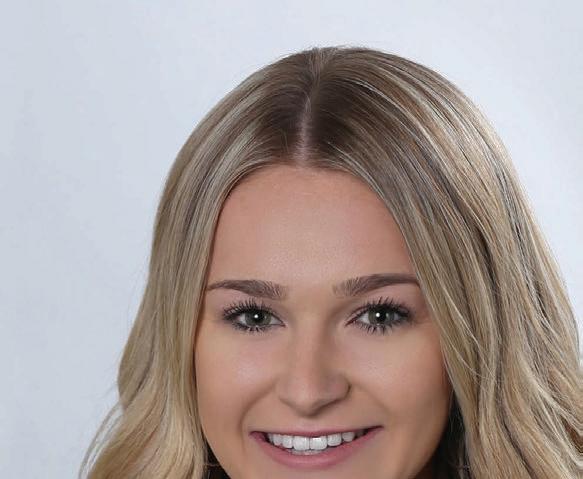
“Since firms make decisions on what the owners are contractually requiring, we started to see an increase for higher limits that has consistently grown at a small angle through the 2010s,” Collins said. “The higher the limits, the higher the premium. The more that the firms are working and the more revenues that they have, the premium goes up as the exposure goes up.”
Collins says the likelihood that a higher limit is going to be paid on a given claim is becoming greater. “You’ve got to capture
that increased loss somehow. That’s generally seen in firms that need higher limits which are generally paying a little bit more premium.”



Sound Risk Management





With social and economic inflation driving up costs in a high-risk industry, A/E firms are under pressure to follow sound risk management practices.
Ames & Gough recommends firms implement and leverage new technology solutions to facilitate better tracking and quality control, establish more rigorous documentation procedures and report incidents and claims in a timely manner.

“The data is there that shows that if a firm is prudent in their risk management practices, whether that’s having employees do training on a regular basis, or having companywide meetings, or whatever it might be from a risk management perspective — using your broker to do seminars
and contract reviews, those activities lead to less claim activity within a given organization.”

Misinterpretation of contracts can put architects and engineers at risk of assuming a higher level of liability if something goes wrong on a construction site. One way claims occur is when a contractor alleges that the design documents were not clear or consistent enough for the contractor to complete the project in the allotted time and cost. So, architects and engineers often have the responsibility to look at construction in progress to make sure that it’s in compliance with the project’s design document, Collins says.
Communication is key between carrier and broker, he says. “From a broker’s standpoint, this is where you really lean on your carrier in making sure that the carrier you’re utilizing for your clients has support of risk advisory or risk management for firms.”
APRIL 3, 2023 INSURANCE JOURNAL | 33 INSURANCEJOURNAL.COM Thanks to Mackenzie for the kind words and thank YOU for reading. Our journalists take pride in serving the industry. If this publication is valuable to you, please consider upgrading your subscription at www.insurancejournal.com/pro
“Insurance Journal keeps me up to date on industry trends and the state of the marketplace.”
IJHOUSE16706-halfpage.indd 1 7/9/20 4:12 PM
Mackenzie McNamara, CLCS - Area Assistant Vice President at Gallagher & Satisfied Insurance Journal Subscriber
Spotlight: Employment Practices
EEOC Releases Annual Report for Fiscal Year 2022
The U.S. Equal Employment Opportunity Commission (EEOC) released its report on the agency’s performance during the 2022 fiscal year (FY). The report highlights the EEOC’s efforts that advance its mission for equal employment opportunity, and focuses on several major areas during FY 2022, including addressing systemic discrimination, advancing racial justice in the workplace, enforcing pay equity, and addressing the use of artificial intelligence in employment decisions.

“The EEOC was created as a result of a strong national commitment to civil rights and continues to prove that the causes of justice and equality are greater than hatred, division, and bigotry,” said EEOC Chair Charlotte A. Burrows. “That legacy and our work are critically important to the American people and to this administration as we rebuild the economy to work for everyone and fulfill our nation’s promise of equal opportunity for all.”
The agency reported several significant accomplishments in FY 2022 including:
• Obtaining more than $513 million in monetary benefits for victims of discrimination, an increase from the previous fiscal year;
• Resolving over 65,000 charges of discrimination; and
• Conducting more than 3,000 free outreach events reaching almost 220,000 individuals.
In the federal sector, the agency said it resolved 9,336 hearings, recovered more than $132 million for federal workers and applicants, and significantly reduced the federal hearing inventory by 25% from FY 2021 to FY 2022.
The EEOC said in FY 2022 the agency focused its outreach and education efforts on reaching vulnerable workers and underserved communities, including immigrant and farmworker communities, as well as other communities where individuals may be unaware of their rights or reluctant to come forward to complain about employment discrimination.
Agency staff hosted more than 1,000
events for vulnerable workers and reached nearly 80,000 individuals — an increase in both the number of events and the people reached.
The EEOC reported it also managed through increased demands for services from the public as the nation emerged from the pandemic.
In FY 2022, the agency received 73,485 new discrimination charges, which represents an increase of almost 20% when compared to the previous fiscal year.
It also handled more than 475,000 calls — an 18% increase from FY 2021 — and managed 32% more emails from the public than the previous year.
In conjunction with the Annual Performance Report, the EEOC also released its Office of General Counsel (OGC) Annual Report for FY 2022 describing the agency’s litigation achievements.
In FY 2022, the EEOC filed 91 employment discrimination lawsuits including 53 suits seeking relief for individuals, 25 non-systemic suits with multiple victims, and 13 systemic suits.
34 | INSURANCE JOURNAL | APRIL 3, 2023 INSURANCEJOURNAL.COM
In addition, the agency resolved 96 employment discrimination lawsuits including 10 systemic suits — obtaining just under $40 million in monetary relief for 1,461 individuals. The report includes detailed litigation statistics and summaries of notable resolutions.

OGC’s FY 2022 merits suit filings had the following characteristics:
• 62 contained claims under Title VII (68.1%)



• 6 contained a claim under the EPA (6.6%)
• 7 contained claims under the ADEA (7.7%)
• 27 contained claims under the ADA (29.7%)
• 38 sought relief for multiple individuals (41.7%)
OGC’s merits filings alleged violations covering a variety of bases: sex (45), retaliation (32), disability (27), race (17),

FY 2022 Resolutions by Statute
FY 2022 Monetary Relief by Statute (rounded)
national origin (6), EPA (6), age (6), and religion (3). The most frequently raised issues in EEOC suits were discharge (including constructive discharge) (58), harassment (39), hiring (21), and disability
accommodation (15). At the end of FY 2022, the EEOC had 177 merits cases on its active district court docket, of which 77 (43.5%) were class or systemic cases.


APRIL 3, 2023 INSURANCE JOURNAL | 35 INSURANCEJOURNAL.COM Market-leading Real Estate E&O The essence of consistency and stability Get a quote at victorinsuranceus.com/realestate
CountPercent Suits Title VII 53 55.2% ADA 34 35.4% ADEA 3 3.1% Concurrent6 6.3%
Relief (millions)Relief (percent) Title VII $34.0 85.7% ADA $4.0 9.9% ADEA $0.7 1.8% Concurrent$1.0 2.6% Total $39.7 100%
Idea Exchange: Habitational
Opportunity Abundant in the Multifamily Affordable Housing Market
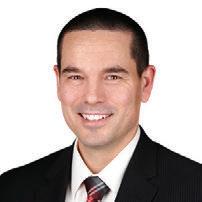
The habitational market has seen more than its fair share of challenges, with many insurers cutting capacity or leaving the market in recent years. While the multifamily affordable housing market — a niche habitational category — shares many of the same property/casualty coverage challenges, it’s ripe for opportunity for agents and brokers looking to spur growth via specialization.
By Nathan Tripler
In this piece, I’ll break down how multifamily affordable housing differs from public housing (often a point of confusion) and share some of the opportunities and challenges in the multifamily affordable housing market.

How Affordable Housing and Public Housing Differ
Before diving into how to position yourself for success in the multifamily affordable housing market, let’s break down how it differs from the public housing industry.
Public housing programs are administered and funded through the Annual Contributions Contract with the U.S. Department of Housing and Urban Development (HUD), meaning public housing providers are subject to HUD rules and requirements. Low-income families and individuals are eligible for the public housing program based on annual gross income. Public housing authorities, which own and manage public housing properties, set income limits based on guidance from HUD.
Like public housing, multifamily affordable housing can be owned by nonprofits, but it is also a private sector, for-profit industry. Affordable housing eligibility varies by locality, the type of funding a property owner receives, and the funding
source, but generally, a family’s income may not exceed 60% of the median income for the county or metropolitan area where the family chooses to live. Eligible individuals or families may be issued a voucher through the Housing Choice Voucher program, and it is up to them to find a private property that accepts the voucher.
Multifamily property owners and developers have the ability to reserve affordable housing units for voucher holders through participation in the Low-Income Housing Tax Credit Program (LIHTC), which offers federal income tax credits as an incentive for private investors and developers to acquire, rehabilitate, and build rental housing targeted at lower-income households.
‘The Market Can Only Harden So Much’

Opportunity is abundant in the multifamily affordable housing market, mainly because there’s such a need for affordable housing — and that need is unlikely to dwindle anytime soon.
“There’s a constant growing need for affordable housing, and with that, a need for someone to specialize in this type of risk and have the ability to place coverage,” said Camron Rafiee, assistant director of underwriting at HAI Group, an insurance carrier serving public and affordable housing providers across the country. “Everyone needs a place to live, and the market can only harden so much.”
A National Multifamily Housing Council report released last summer states that the U.S. needs 4.3 million more apartment units by 2035 to meet the overall demand for rental housing — with Texas, Florida, and California making up the bulk of the demand. A 2023 report from the National Low-Income Housing Coalition reported a current shortage of 7.3 million affordable rental units in the country.
The need for affordable housing is so widespread that there are opportunities to market yourself nearly anywhere you see fit. Migration plays a huge factor, pushing housing prices up in high-growth regions.
36 | INSURANCE JOURNAL | APRIL 3, 2023 INSURANCEJOURNAL.COM
In the 2015 — 2019 time period, the nation’s most populous states saw the largest growth of new LIHTC-assisted affordable units, said Kelly McElwain,
Top 10 States with New LIHTCAssisted Affordable Units
Placed in Service: 2015-2019
TX36,390
lead research analyst with the Public and Affordable Housing Research Corporation (due to LIHTC data lags, more recent information isn’t yet available). “Washington built the most new LIHTC-assisted affordable units between 2015 and 2019 relative to the number of families in need, adding 42 new LIHTC-assisted units for every 1,000 renter households below 50% of the area median income,” she said.
McElwain noted that most affordable housing investments tend to be concentrated in cities with large populations of families in need. Affordable housing growth is largely funded by the federal government in the form of grants and tax credit allocations to state and local affordable housing agencies.
“There are some new programs rolling out that could expand the toolbox to build and preserve affordable housing, including the Inflation Reduction Act, which created numerous energy efficiency and climate resiliency programs, providing $25 billion that is directly targeted or can be used by affordable housing providers to advance these goals,” McElwain said.
Opportunities and Challenges
So, the multifamily affordable housing market is primed to grow, but how do you grow with it?
Research your marketing efforts using the National Housing Preservation Database (NHPD). Agents and brokers can use the database to:
• Locate and quantify the amount of affordable housing in target markets.
• Identify the funding characteristics of affordable properties.
WA 17,657
• Identify which regulations apply to a property by studying the subsidies awarded to housing providers.
Various factors limit the rate at which the multifamily affordable housing market can grow, including catastrophic events and the impact of climate change.
“Catastrophic events are increasing insurance costs in multifamily, making it harder for developers to close affordable housing deals,” McElwain said.
There’s also a perception problem when it comes to affordable housing. Local zoning restrictions can increase the cost of developing affordable housing, hindering development in these areas.
Housing development has also slowed across the board due to the cost and scarcity of materials, labor and land. Multifamily buildings now take just over two months to start and 15 months to complete, on average, which is tied for a record high, according to a report from the Joint Center for Housing Studies of Harvard.
A recent report from Enterprise Community Partners does show cause for optimism on this front, with the expectation that rising interest rates will cool single- and market-rate multifamily construction, easing demand on materials and labor for affordable multifamily developers.
Despite the opportunities and challenges related to multifamily affordable housing, your success in the market hinges on your ability to build relationships.

VA 8,469
PAHRC tabulation of NHPD, retrieved January 2023.Note: The number of LIHTC units placed in service between 2015-2019 may be underestimated due to data lags or missing placed-in-service dates.
Agents interested in growing with the market should learn as much as possible before things get more competitive. Look into the LIHTC Certification and other training opportunities specifically designed for affordable housing. Learn the ins and outs of the affordable housing business. When you’re in front of a client, your chances of success increase when you show you know what you’re talking about.
“You need to build relationships with clients and carriers,” HAI Group’s Rafiee said. “The price tag isn’t the only factor when finding the right carrier for your clients. You should strive to work with reliable carriers who won’t leave the market at a moment’s notice, despite the challenges. And you want carriers with a risk management mindset that focuses on predicting and preventing instead of waiting for things to happen. Work with carriers who can act on your client’s best behalf.”
APRIL 3, 2023 INSURANCE JOURNAL | 37 INSURANCEJOURNAL.COM
NY33,173 CA26,827
Tripler is a senior business development consultant with HAI Group, an insurance carrier dedicated solely to the public and affordable housing industries. He specializes in assisting agents and brokers seeking coverage for their affordable housing clients. Email: ntripler@housingcenter.com. Phone: 800-873-0242, ext. 210. Website: www.haigroup.com. FL16,189
NC14,995 CO10,441
MN9,500
GA8,388
Idea Exchange: Marketing
Winning the Referral Game with Real Estate Education
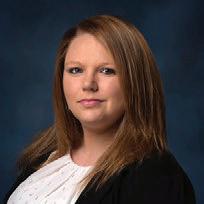
game. By arming your agents with a strong knowledge of the real estate industry, you can position your brokerage as a valuable partner to real estate agents, who are often the first point of contact for potential homebuyers.
estate agents. As a result, you will be more likely to receive referrals from real estate agents who are confident in your ability to provide their clients with the best possible coverage.
from
 By Megan Stevenson
By Megan Stevenson
In the highly competitive world of property/casualty insurance, building a strong referral network is key to success. Referrals are an effective way to generate new business, as they come from satisfied clients who are willing to recommend your services to their family and friends. But how do you ensure that you are receiving a steady stream of referrals? One answer lies in real estate education.
Real estate education can be a game-changer for property/casualty insurance brokerages looking to win the referral
Here’s how real estate education can help you win the referral game:

1. Establish Yourself as a Trusted Advisor and Build Your Reputation
Real estate agents are always on the lookout for partners they can trust to provide their clients with the best possible service. By investing in real estate education, your agents can demonstrate their expertise and knowledge of the industry, which will help to build trust with real
By investing in real estate education, you can build your reputation as a knowledgeable and trustworthy provider of insurance solutions. This reputation can help you to attract new clients and generate more referrals. Real estate agents are more likely to recommend your services if they have confidence in your ability to provide their clients with the best possible coverage.

2. Understand the Real Estate Industry
In order to build strong relationships
38 | INSURANCE JOURNAL | APRIL 3, 2023 INSURANCEJOURNAL.COM
‘Real estate education can be a game-changer for property/casualty insurance brokerages looking to win the referral game.’
with real estate agents, it’s important to have a deep understanding of the real estate industry. Real estate education can help your agents gain a better understanding of the market, including trends and regulations that may affect your clients. This knowledge can be invaluable in helping your agents provide tailored insurance solutions that meet the unique needs of each client.
3. Identify Opportunities for Collaboration
Real estate education can also help your agents identify opportunities for collaboration with real estate agents. For example, if a real estate agent is working with a client who is in the process of buying a home, your agents can work with the real estate agent to provide insurance solutions that are tailored to the needs of the client. This type of collaboration can help to strengthen your relationship with real estate agents and generate more referrals.
4. Provide Value to Real Estate Agents
Real estate education can also help you provide value to real estate agents beyond just insurance solutions. Instead of spending your time talking to real estate agents about who you are and what your company does, offer to teach them something valuable that will help them in their business. Remember, you are the expert, and you have a wealth of useful, relevant information that can assist them in helping their clients.
When it comes time for a real estate agent to make an insurance referral, who are they more likely to send their client to, a stranger that shows up in the lobby with a brochure and a business card or someone who just spent an hour or more providing valuable information that has helped them become a better agent? By providing value in this way, you can build stronger relationships with real estate agents and generate more referrals.
5. Create Educational Content
Creating education content that can be accessed by real estate agents online can be a great tool for referrals. This could include blog posts, videos, podcast or
infographics that provide insights into the real estate market and insurance products and services.
Creating educational content has several benefits. First, it can help you reach a larger audience than you would with in-person events. Second, it can position you as an authority in the industry and help you win the trust of potential clients. Finally, educational content can be shared on social media, which can help you attract new leads and referrals.
However, we are in a technological era with advertisements and content being thrown at agents constantly. How do you set yourself apart from all of the noise? You offer to provide educational content that is valuable, in addition to the blog posts and podcasts. Providing education can be the secret to getting time in front of real estate agents while continuing to grow these relationships. Every time you teach an agent or a group of agents a new part of the business, you earn a little more of their trust. Eventually, you will be the person they turn to instead of the stranger who showed up in the lobby with a box of doughnuts and some brochures.
To start teaching, you need to develop some topics that you feel passionate about and are beneficial to real estate agents. These topics can range from the basics of homeowners insurance to risk management for the real estate agents’ business. The sky is the limit as long as the topics are relevant and interesting. Once you have some topics in mind, you will need to build the presentations. Each presentation represents another opportunity to connect and reconnect with more agents, so you will want to make sure they look professional.
6. Host Seminars and Workshop
One effective way to educate clients about real estate and insurance is to host seminars and workshops. These events can be held in person or online and can cover a variety of topics related to real estate and insurance. For example, you could host a seminar on the homebuying process and include a section on the types of insurance coverage that are required or recommended. Hosting a seminar or
workshop can also help you establish yourself as a thought leader in the industry. By providing valuable information and insights, you can position yourself as an expert and build trust with clients.
These types of presentations make a great marketing tool, yet they are often hard to schedule and may be a low priority for agents. The secret to booking more of these types of presentations is to offer continuing education credits to agents. Real estate agents and brokers must complete a specified number of continuing education (CE)credits each year or in a recurring time period. The number of credits, as well as the deadlines, vary from state to state. State laws establish the requirements, which are usually administered by state real estate commissions.
7. Stay Ahead of the Competition
You will offer great value to real estate agencies and their employees if you’re an approved and certified continuing education instructor in your state. By offering to give presentations that include CE credits, you will set yourself apart from your competitors.
Insurance professionals who become state-certified CE instructors have a much easier time scheduling appointments with local real estate agencies because they can offer CE credits for their presentations. Most mortgage lenders are not approved CE instructors, so those who are become highly regarded as the trusted experts.
In light of the recent global events, real estate agents have become accustomed to doing everything online, from virtual showings to closing transactions. The continuing education world is no different, and although one of the best methods for gaining the trust and respect of agents is to get in a room with them face to face, it is no longer the only available method for teaching continuing education. The ability to teach in-person or online gives you the freedom to fit classes into your schedule and expand your reach across your local region.
Stevenson is the vice president of Preferred Systems Inc. and is responsible for managing its national education programs.
APRIL 3, 2023 INSURANCE JOURNAL | 39 INSURANCEJOURNAL.COM
Idea Exchange: Workplace Safety
Workplace Shootings Are on The Rise
 By Joseph Dorr and
By Joseph Dorr and

Here’s How the Insurance Industry Can Respond
 Christa Solfanelli
Christa Solfanelli

Tragically, active shooter incidents are on the rise across the country. According to the Gun Violence Archive, more than 100 mass shootings
have occurred in the U.S. in 2023 alone. News organizations have reported that there have been more mass shootings than days this year.
A sobering reality is just how many of these tragedies occurred within the workplace. Out of the 61 shootings in 2021 that met the FBI’s definition of an active shooter — “individuals actively engaged in killing or attempting to kill people in a populated area” — 57% took place within a


40 | INSURANCE JOURNAL | APRIL 3, 2023 INSURANCEJOURNAL.COM
business, educational or healthcare facility.
In February, a gunman opened fire on Michigan State University’s campus, killing three students and injuring five others. Sadly, this followed several other high-profile workplace shootings, including at a New York grocery store, a break room at a Walmart in Virginia, a Texas elementary school and an Oklahoma medical building.
What can those of us working in insurance and risk management do to help
protect people first and foremost? And how can we provide proper protection for property and operations from these horrific and seemingly random tragedies?
While there is no magic solution to prevent shootings from occurring, there are several steps that we can take to help those we serve be as prepared and protected as possible — and they are more comprehensive than simply offering active shooter training.
As risk management partners, we work closely with our clients to identify the varied threats their people and operations might face, pairing risk reduction strategies with the right insurance coverage to minimize risk and maximize protection. Yet the typical matrix for evaluating risk — comparing the frequency of a threat against its severity — breaks down when we’re talking about workplace violence. A shooting at your client’s business remains unlikely, but the consequences would be catastrophic if it did occur.
Insurance leaders therefore have the responsibility and the opportunity to think critically about the impacts of such a tragedy and proactively make decisions now to protect clients and their employees.
The first step should be recommending the hiring of a qualified, experienced security consultant to complete a full evaluation of the business and operations. This consultant can help in thoughtfully and thoroughly securing a building; developing a pre-screening procedure for visitors to mitigate the risk of a perpetrator from outside the company; and creating a screening plan for staff that fits into a holistic workplace violence prevention program, among other measures.
Workplace violence, including on-site shootings, is often preceded by warning signs and unusual behaviors. We need to ensure we’re helping clients see the signs. When employees are trained to recognize certain behaviors and are comfortable reporting them, some threats can be eliminated at the start. A security consultant can help create a best-in-class employee training program that empowers the workforce to minimize potential violence.
Those are just a few of the proactive steps we can offer as a risk manager to
enhance the security within the walls of an organization.
But because there is no way to eliminate the possibility of a workplace shooting, leaders would be wise to evaluate current insurance coverage and consider where there may be significant gaps in the event of a tragedy.
For example, a general liability policy may exclude coverage for third-party claims involving gun-related violence, and coverage for physical injuries to employees may be limited under a workers’ compensation policy, depending on the circumstances surrounding the incident.

Additionally, if a workplace is forced to shut down for a period of time due to an investigation, trauma, or other related reasons, property insurance may not cover that business interruption expense unless there’s physical damage to the property.
Over 100 mass shootings have occurred in the United States in 2023.
There are now insurance products designed to fill these specific coverage gaps, offering everything from preventative advisory services to coverage for legal liability, crisis management, employee counseling, medical services, property damage, business interruption, and more. Since the odds of needing to use this insurance remain thankfully low, many include generous limits for relatively low deductibles.
Some industries, including healthcare and education, are unfortunately more likely to experience targeted violence than others, and will therefore need unique safety considerations and strategies.
A quick glance at the recent news headlines is sobering, but as violence rises, so can prevention. With foresight and expertise, insurance leaders can equip their clients with the tools, training and strategies to make their workplaces an environment of safety and respect.
APRIL 3, 2023 INSURANCE JOURNAL | 41 INSURANCEJOURNAL.COM
Dorr, CIH, CSP, CHSP, is assistant vice president at Graham Company. Solfanelli, Esquire, serves as general counsel at Graham Company.
Idea Exchange: Entertainment
When it Comes to Today’s Mega-Concerts, Insurance Takes the Spotlight
By Frank Zuccarello
Music lovers have heard the recent horror stories about how some of Taylor Swift’s fans were upset when they could not get tickets to see her upcoming mega tour. Her young fans and their “forever trying to please the children” parents were crying out loud and often on social media, saying it is not fair that they couldn’t get tickets, or that the prices were so high.
As a cynical, middle-aged, music fan and insurance professional, this prompts me to offer some advice for these folks: You need to calm down and, welcome yourself to our world of supply and demand! It really feels no different than back in the late 1980s when I physically waited in line at the Nanuet Mall (as opposed to today’s online) for a lottery wrist band to see if I could get AC/DC tickets. The technology has changed, but the reality is, if you want to absolutely guarantee yourself a ticket to a concert, you may just have to set your sights on a less popular artist. There is the
adage that nothing in life is guaranteed, and in the mega-concert industry that holds true even after you have tickets in hand to the big show.
As a consumer you may be investing hundreds of dollars for a ticket. But when business managers and tour promoters sit down to figure out their potential revenues, and how to protect their investment from the possibility of refunding tickets due to Mother Nature or the inability of the artist to appear due to myriad health reasons, they find the investment can reach multi-million dollar levels. To protect that investment, it is not uncommon for major touring artists to have their tours insured for upwards of $50 million or more.
Coverage for this class of business is known as Non-Appearance/Event Cancellation insurance and it is designed to protect the policy owner if a show or series of shows is missed, postponed, abandoned, or rescheduled. This level of coverage can prove to be heavy lifting for traditional carriers, who must instead rely on specialty carriers such as Lloyd’s of London to underwrite a broad policy form that covers perils from death, injury or
illness of one or more scheduled artists, as well as venue destruction, and many other perils that could cause a loss.


When a large act goes on the road, the artist’s management determines the potential income from the guarantees plus percentages put up by the promoters. Then they factor in what the loss would be if the artist failed to complete all or part of the tour. Most venues are paid up front, and they get paid whether the concert is successful or not, or if it even takes place or not. Rebooking dates can be a challenge if the venue is used for other events.

Protecting the Investment
All professional business managers have their own philosophy as to what they will and won’t insure, but most buyers of this type of insurance typically look to protect a percentage of their guaranteed income that usually ranges from 50% to 85%. Many decisions are made based on the financial arrangement with the promoter, who often retains the bulk of the risk.
A music tour is a risky endeavor, and history shows that there can be losses from artists of all ages and experience. The

INSURANCEJOURNAL.COM 42 | INSURANCE JOURNAL | APRIL 3, 2023
veteran rockers (i.e., Cher, Elton John) are living much healthier lives than they did in the 1960s and 1970s, but there is still some wear and tear on the body. Younger performers, on the other hand, work long and fast but are unprepared for the constant physical, mental and emotional strains one endures while on the road.
Cancellations come in all shapes and sizes. Several years ago, Blues Traveler was forced to cancel its 2021 touring plans following a bus accident that left lead singer John Popper injured when their vehicle veered over a median in Minnesota. Popper suffered a torn ligament in his right knee.
Even more recently, in 2022 — and perhaps we should list this among one of the strangest reasons to cancel shows — Pearl Jam scratched a second concert on their European tour because of damage to singer Eddie Vedder’s vocal cords from wildfires that had been plaguing France. Billboard reported that according to the band, “due to the extreme circumstances at the last outdoor site outside of Paris (heat, dust and smoke from the fires) our singer Ed Vedder’s throat was left damaged. He has
seen doctors and had treatment but as of yet, his vocal cords have not recovered.”
An insurance policy can be used as a safeguard should the need arise to reschedule events, replace equipment, and sometimes even personnel. Besides providing monetary protection in the form of a policy, coverage can also include rescheduling a missed date, getting the best doctors into the mix, and so forth.
Those tasked with putting on large shows need to rely on experts to manage proper underwriting, fair rates, and deductibles. And the industry needs to manage the mitigation of risks and learn to insure these risks with open eyes. If we feel sick and take the day off maybe our partner or a few friends might feel bad for us. But when, for example, Ed Sheeran feels sick, the 80,000 people at MetLife Stadium who are now holding meaningless tickets feel like Ed’s “… bad habits lead to late nights endin’ alone.” Someone has to pay the bill for that disappointment.
Postponing a major tour can involve significant costs with millions of dollars already invested in marketing and production, and there’s a good chance the produc-

tion team may have picked up other work in the interim. Rescheduling becomes a nightmare. But with the right policy in place, most of the costs associated with a rescheduling would be covered.
When Tom Petty sang “The Waiting is the Hardest Part,” perhaps he was describing what it’s like staring at a screen hoping to get concert tickets. So, whether you are trying to get those valuable tickets for your demanding children, or you simply want to escape for one night back to your concert-going days, keep in mind there is a lot going on behind the scenes, and big money goes into making sure your experience is fulfilled. To ensure this happens, the concert promoter is looking to their insurance advisors in order to protect their investment in the best way possible.
Zuccarello is a partner at Exceptional Risk Advisors. With more than 20 years of industry experience, his specialty lies in the Entertainment and Contingency lines of the business. He oversees the specialty insurance high-limit placements of the biggest money-making concert tours and entertainment events in the industry. Email: frank.zuccarello@ exceptionalriskadvisors.com.
APRIL 3, 2023 INSURANCE JOURNAL | 43 INSURANCEJOURNAL.COM
Most venues are paid up front, and they get paid whether the concert is successful or not …
Idea Exchange: Agency Management
The Talent Crunch Is Poised to Get Much, Much Tougher: Here’s How to Win
Irecently participated in a discussion on agency challenges for a major commercial property/casualty carrier. When asked about their challenges, every single agency owner cited talent as their number one challenge. Frankly, there wasn’t much conversation about anything else. While this is consistent with what I had been hearing for years, the intensity in the room was palpable.
us that as supply goes down in the face of consistent or rising demand, the cost will go up. That’s happening across the economy with non-farm wages up almost 5% year over year, according to the federal government. Yet, insurance agency jobs go unfilled.
When the people needed to fill positions don’t exist despite rising salaries how can you fill the positions needed to sustain or grow your agency?

typically only used by agencies in acute or urgent circumstances, has lost its effectiveness because it is now so commonplace. Recruiter calls are experienced frequently by most agency employees. As a result, these calls are becoming background noise. A recruiter I’ve worked with for over two decades told me this is the toughest environment he’s ever navigated, and he doesn’t expect it to get better.

In With the New
By Tony Caldwell
Soon after, I participated in a discussion with a local investment banking firm, where an executive said their survey research demonstrated that just over two open positions are being advertised for every unemployed person in the country.
That’s up from the previous quarter and year. In the same call, we discussed the overall unemployment rate. At under 3.5%, the rate continues to stump economists as they try to predict when inflation will abate and the Federal Reserve will quit hiking interest rates. After almost 18 months of raising rates, inflation seems persistent and that is linked to the low unemployment rate.
We’ve known for years that most employees in the independent agency system will be age eligible to retire in this decade. And they are doing just that, along with others in the Baby Boomer cohort. This generation, the largest in American and world history, is being replaced by one of the smallest generations.
So, of course employees are getting more and more difficult to find. The basic law of supply and demand tells
Out with the Old Way
The first step is to realize that employers no longer have the power in the employer/ employee relationship, employees do.

What does this mean? Now, the employers must interview to be found worthy of the employee and not the other way around. This has implications both for how you advertise or recruit people and how you plan for it.
The traditional manner of seeking a new person for your team was for the business owner to develop a job description and post it on various advertising media. This type of recruiting effort essentially asked prospective employees to “prove” themselves to the employer and “sell” themselves as a great fit for a job based on posted criteria. The employer decided who fit and who didn’t, and then controlled to a large extent the compensation and benefits discussion.
This traditional method was also somewhat passive in that the business owner put an ad out there and waited for qualified people to show up and read it. This isn’t working very well any longer. As a result, many business owners are turning to professional search firms to find talent. However, using a search firm, which was
Clearly, traditional recruiting methods aren’t working as well as they had in the past. And competition among employers continues to increase, making the task all the harder.

INSURANCEJOURNAL.COM
So, if the traditional methods of recruiting a new employee no longer work, how do you “win” in the supply constrained marketplace for the talent you need?
First, accept the new reality. You have to convince the people you need that you have the workplace, position and future they want not the other way around. This means you must understand and focus on your competitive strengths compared to other employers. If you aren’t offering top notch compensation packages that include salary, bonus and benefits, you must either retool or accept consistent recruiting failure or less experienced or talented people.
It also means that you must assess, and modify as required, soft benefits like remote work options, job sharing and similar things. If you choose to be less flexible or generous, you will need to reconcile yourself to talent problems. Of
critical importance is company culture. The Millennial and following generational cohorts care deeply about company culture and that is showing up in surveys as often more important than cash compensation.
It’s important to realize that the marketplace for talent is dynamic and constantly changing. Your people are hearing what your competitors are offering on virtually a weekly basis and you need to understand your competition for talent as deeply as you understand your target markets for insurance sales.
A Proactive Approach
All of this brings me to my essential point on winning in the talent competition. It can no longer be a passive activity, nor can you wait until you have a vacancy to start looking for a candidate. It’s important
to remember that younger generations value job tenure and stability less than the older one, so increased turnover is also a growing risk. Simply put, you must be marketing for talent all the time.
By marketing for talent, I mean that you must proactively be communicating in a compelling manner your employment value proposition in the same way you are accustomed to marketing for new insurance clients. You need to regularly advertise, post on social media, attend, and actively participate in relevant industry events, and so on. And you need to do it with the same mindset as when searching for clients.
Prospective clients want to know “what’s in it for me?” The same holds true for prospective hires.

When you have a live insurance prospect in front of you, a careful needs and wants analysis comes before a winning sales pitch. That is now required in hiring new team members. It’s no longer first and principally about you, it’s about them. You must be able to convincingly demonstrate why you are a prospective employee’s best choice.
As much as any set of tactics or strategies, the critical thing about winning in the talent marketplace is a change of mindset. The old ways demonstrably don’t work anymore, and the power relationship won’t revert for at least 20 years based on population and demographic statistics.
So, the shortages are here permanently. The winners in the competition for talent will acknowledge that. They’ll embrace new ways of building the great teams that power success in the agency business.
Caldwell is an author, speaker and mentor who has helped independent agents create more than 250 independent insurance agencies. Learn more by visiting www.tonycaldwell.net or contacting him at tonyc@oneagentsalliance.net.
APRIL 3, 2023 INSURANCE JOURNAL | 45 INSURANCEJOURNAL.COM
You have to convince the people you need that you have the workplace, position and future they want …
Idea Exchange: Minding Your Business

Acquisitions and Agency Value
Growth by merger or acquisition
and can end up with a purchase of an agency that is not good for them.
Regardless of the size of the purchase, a professional valuation is always going to be worth looking into.
By Catherine Oak
is still a popular and valuable tool. One of the main reasons why this is staying popular among agencies is because it is a way for them to show growth when they are struggling with it organically.
Though this may seem like an easy way for an agency to grow their book of busi ness, if this is the owner's last resort for growth there are usually other issues going on as well! The only way an acquisition is going to work as a growth tool for an agency is if that agency is already seeing internal growth.
If the agency is not seeing internal growth, there are usually other factors as to why growth is not happening. Some examples of why an agency may not be growing internally are producers not performing, CSR workloads are not appropriately managed, or the agency may not have a sales and marketing plan. Owners need to make sure the agency is showing internal growth before a decision to acquire is made.
Once the agency is ready to consider an acquisition or merger, this is when agency value and the fundamentals around it will be most important. If an agency is already in the middle of a deal, it is probably is too late to worry about agency value. The best time to look into an agency valuation is right when you start the process of being at either end of a merger or acquisition.
Paying Too High a Price
Since mergers and acquisitions have become so popular, too many deals are being made with the buyer paying too high a price in too short a period because there is competition, especially with all the private equity (PE) money available to the larger national firms today. Often the agency or book of business has not been properly valued. Also, agency owners get excited and may make a quick decision,
First, let’s go over the wrong ways many agencies value themselves. The biggest mistake that is made when it comes to agency value is usually done when there is a “self-made” deal going on. The purchase price is usually set through a multiple of revenues and/or commission, ignoring the actual potential profit/cashflow to the buyer that the book or agency can generate.
The “multiple” approach to valuing a business is outmoded and is not recommended by most professional appraisers.
This approach is tempting to use if the acquisition is a small book of business
and other assets are not included. The ease of calculating value at 1 times to 2.5 times revenues can cost thousands of dollars, not only in lost profit from possible overpayment but also lost income from using available capital for the purchase, rather than putting that money into other investments, like good people or new producers.
When a valuation uses a multiple of revenue or commission, it ignores variation in profitability and risk. Two firms with the same revenue may vary significantly in the risk that profit will be sustained, as well as in the actual profit margin generated. An astute buyer would not pay the same “multiple” for these two firms if the risk and profit margins vary greatly.

The other key is whether the acquisition

46 | INSURANCE JOURNAL | APRIL 3, 2023 INSURANCEJOURNAL.COM
is growing or just wasting over time, from lack of attention from the owners.
Valuation Methods to Use
So, what valuation methods should agencies be using? There are several different acceptable approaches to valuing a book of business or an agency. Income approach methods are commonly used by professional appraisers and are often the most appropriate methods. The two basic methodologies using the income approach are the Capitalization of Earnings method and the Discounted Future Earnings method.
The Capitalization of Earnings method uses a single period earning stream (pro forma profit) and divides it by an appropriate capitalization rate (rate of return) to arrive at a value for the operation of the business.

The Discounted Future Earnings method
uses the same concept but bases it on a multiple year forecast and takes into account the present value of the forecasted future earnings.
The typical property/casualty firm today is able to generate between a 15% to 25% pro forma profit margin. The value of an agency or book of business is then determined using a multiplier to this pro forma profit. The higher the risk for continued earnings, the lower the multiplier. Astute buyers today are typically paying between six to nine times the pre-tax pro forma profit to value the deal. Some very aggressive firms with PE backing have been known to pay 10-12X EBITDA (earnings before interest, taxes, depreciation and amortization).
Capital Gains Tax Rates
If one finds themself on the side of selling their agency, there are also capital
gains taxes to deal with. Capital gains federal tax went up from 15% to 20% on Jan. 1, 2013, with the new fiscal cliff taxes. In addition, in California there is a Health Care Act tax of 3.8%, so that leaves capital gains federal tax at 23.8% plus the state income tax on a sale. Prior to that, it was only 15% plus state.
The taxes are at a high but there are talks about capital gains federal tax possibly even getting to 35% and recently President Biden suggested 60%! So, selling now is not a bad idea.
Also, if a seller takes his/her payments over a couple of years, the tax burden is not all at once. If a seller accepts an earnout, which is a percentage of renewing commission over a few years, the value of the agency’s book of business can increase because the seller benefits from the improving economy and the hardening of commercial line rates at each renewal, especially for workers’ compensation.
The opposite is true for the books that decline, as the buyers do not have to pay for commissions that go away over the time period set by the terms. Buyers like to have an earn-out so they know that the book of business is properly transitioned before all payments are made and there is no fallout.
Summary
In conclusion, astute buyers should take the time to properly analyze any acquisition both financially- and compatibility-wise. By following the advice in this article, sellers will also position themselves today to sell at an above average fair price tomorrow. Remember that everyone must sell someday, either internally or externally. Planning this strategy well, especially with a good consultant, can be very worthwhile for both sellers and buyers.
Oak is the founder of the international consulting firm, Oak & Associates, based in Bend, Oregon and Sonoma, California. The firm specializes in financial and management consulting for national and international insurance agencies, including valuations, mergers and acquisitions, clusters, sales and marketing planning, as well as perpetuation planning. Phone: 707-935-6565. Email: catoak@gmail.com.
APRIL 3, 2023 INSURANCE JOURNAL | 47 INSURANCEJOURNAL.COM
Idea Exchange: Ask the Insurance Recruiter

A Checklist to Successfully Hire Remote Account Managers
Buffer has been studying remote workers for several years. Their 2022 State of Remote Work report surveyed over 2,000 people in 16 countries with three-quarters at firms with less than 500 employees. Consistent with their 2021 findings, the most recent study showed “97% of respondents would recommend remote work to others, 97% want to work remotely at least some of the time for the rest of their careers, and 49% prefer fully remote as compared to only 16% that want office-occasional structures.”
Avoid The Traps Other Agencies Fall Into
We all read this and think that insurance organizations must offer remote opportunities to attract and retain top talent. However, in 2022 my team saw a concerning number of insurance professionals, especially account managers, seek new employment because their remote situation was not good. The overwhelming majority said their agency did not have a communication, integration or management plan in place for remote employees. How do so many agencies end up with frustrated remote employees? It’s because they hired out of desperation. Up until 2020 the average account manager search took approximately 60 days to hire. From 2021 onward the average fill time increased
to nearly 120 days. When jobs are open for twice as long, customers become angry and service teams overworked, not to mention increased competition and poaching from outside companies, I understand why agencies made hiring adjustments. That said, remote is only a temporary solution if you can’t retain hires at the same rate as in-office employees.
A Checklist for Recruiting Work-FromHome Account Managers
I don’t advocate for across-the-board decisions to allow all positions to work remotely. There is a time and place for account manager positions to be treated differently. This checklist should help you determine if hiring remote, on a particular search, is right for you.

Can We Train On Our Agency Management System?
Some agencies say “yes” with the qualifier that candidates must have experience working on the same system Epic, AMS360, Sagitta, TAM. For roles like tech, assistant and CSR that require a lot of training, in-office is probably best.
Will We Treat Them the Same as In-Office Employees?
If you won’t pay for transportation and
lodging so remote workers can attend culture events (holiday parties, training, annual meetings, client visits and team building events), then say “no.”
By Mary Newgard
Do We Consider Remote Work a Special Perk?
A “yes” answer invites an attitude of suspicion, as if the person is not afforded similar workplace flexibility with hours, PTO and so forth. Some agencies install software to monitor computer login and keystrokes. Do not go remote if you’re teetering on this cliff.

Can the Producer Adapt?
If “yes,” then hire remote account managers because the producer is fully comfortable not seeing his or her client service team in-person. If “no,” do not hire remote account managers no matter how badly the producer needs the role filled.
Can the Manager Adapt?
Account manager retention starts on day one. Regular check-ins and performance reviews are critical and should happen more frequently than with office staff. Hire remote if the supervisor commits to a communication plan.
A lot of insurance agencies told me their turnover was twice as high in 2021 and 2022, as much as 15% for regional brokers. I personally saw the highest number of terminations and resignations for new hires in 2022 than any year in my career. Don’t hire remote if you cannot onboard and train virtually.
48 | INSURANCE JOURNAL | APRIL 3, 2023 INSURANCEJOURNAL.COM
Newgard is partner and senior search consultant for Capstone Search Group, a national recruiting firm dedicated to the insurance industry. Email: asktherecruiter@ csgrecruiting.com.
April 3, 2023
Greater Mid-Atlantic Indemnity Company



200 Madison Avenue, Third Floor New York, NY 10016
The above company has made application to the Division of Insurance to obtain a Foreign Company License to transact Property and Casualty Insurance in the Commonwealth of Massachusetts.
Any person having any information regarding the company which relates to its suitability for the license or authority the applicant has requested is asked to notify the Division by personal letter to the Commissioner of Insurance, 1000 Washington Street, Suite 810, Boston, MA 021186200, Attn: Financial Surveillance and Company Licensing within 14 days of the date of this notice.
April 3, 2023
Landcar Casualty Company
351 W. Opportunity Way, Suite 440 Draper, UT 84020
The above company has made application to the Division of Insurance to obtain a Foreign Company License to transact Property and Casualty Insurance in the Commonwealth of Massachusetts.
Any person having any information regarding the company which relates to its suitability for the license or authority the applicant has requested is asked to notify the Division by personal letter to the Commissioner of Insurance, 1000 Washington Street, Suite 810, Boston, MA 021186200, Attn: Financial Surveillance and Company Licensing within 14 days of the date of this notice.
April 3, 2023
Omaha National Insurance Company 9110 West Dodge Road, Suite 300 Omaha, NE 68114

The above company has made application to the Division of Insurance to obtain a Foreign Company License to transact Property and Casualty Insurance in the Commonwealth of Massachusetts.
Any person having any information regarding the company which relates to its suitability for the license or authority the applicant has requested is asked to notify the Division by personal letter to the Commissioner of Insurance, 1000 Washington Street, Suite 810, Boston, MA 021186200, Attn: Financial Surveillance and Company Licensing within 14 days of the date of this notice.
April 3, 2023
Intrepid Casualty Company
5400 West 110th Street, 4th Floor Overland Park, KS 66211
The above company has made application to the Division of Insurance to obtain a Foreign Company License to transact Property and Casualty Insurance in the Commonwealth of Massachusetts.
Any person having any information regarding the company which relates to its suitability for the license or authority the applicant has requested is asked to notify the Division by personal letter to the Commissioner of Insurance, 1000 Washington Street, Suite 810, Boston, MA 021186200, Attn: Financial Surveillance and Company Licensing within 14 days of the date of this notice.
April 3, 2023
Pie Casualty Insurance Company
1615 L Street NW, Suite 620 Washington, DC 20036
The above company has made application to the Division of Insurance to obtain a Foreign Company License to transact Property and Casualty Insurance in the Commonwealth of Massachusetts.
Any person having any information regarding the company which relates to its suitability for the license or authority the applicant has requested is asked to notify the Division by personal letter to the Commissioner of Insurance, 1000 Washington Street, Suite 810, Boston, MA 021186200, Attn: Financial Surveillance and Company Licensing within 14 days of the date of this notice.
April 3, 2023
Mainsail Insurance Company 1 Pluckemin Way, Suite 102 Bedminster, NJ 07921
The above company has made application to the Division of Insurance to obtain a Foreign Company License to transact Property and Casualty Insurance in the Commonwealth of Massachusetts.
Any person having any information regarding the company which relates to its suitability for the license or authority the applicant has requested is asked to notify the Division by personal letter to the Commissioner of Insurance, 1000 Washington Street, Suite 810, Boston, MA 021186200, Attn: Financial Surveillance and Company Licensing within 14 days of the date of this notice.
April 3, 2023
Normandy Insurance Company 4800 N Federal Hwy, Suite A302 Boca Raton, FL 33431
The above company has made application to the Division of Insurance to obtain a Foreign Company License to transact Property and Casualty Insurance in the Commonwealth of Massachusetts.
Any person having any information regarding the company which relates to its suitability for the license or authority the applicant has requested is asked to notify the Division by personal letter to the Commissioner of Insurance, 1000 Washington Street, Suite 810, Boston, MA 021186200, Attn: Financial Surveillance and Company Licensing within 14 days of the date of this notice.
APRIL 3, 2023 INSURANCE JOURNAL | 49 INSURANCEJOURNAL.COM
Applied Underwriters www.auw.com 2, 3, 52 Foremost Insurance Group www.foremoststar.com 7 IICF www.iicf.org 9 JM Wilson www.jmwilson.com W2, S2, M2 M.J. Hall & Company, Inc. www.mjhallandcompany.com W1 Monarch E&S Ins Services www.monarchexcess.com W3 PersonalUmbrella.com www.personalumbrella.com 17 Texas Mutual www.texasmutual.com SC2 The Hartford www.thehartford.com 5 Victor Insurance Managers, Inc. www.schinnerer.com 35
Advertisers Index
iPhone & Android Smartphone users: Just scan the QR code to get the Insurance Journal News app. How cool is that?! Still ahead of the curve. IJHOUSE15215.indd 7/5/11 10:26 AM
Closing Quote
Overcoming Barriers: Where Are the New MGAs?
 By Lael Chappell
By Lael Chappell
Our industry’s rising volume of non-traditional risks won’t diminish anytime soon. That’s why it’s vitally important to support underwriters and other entrepreneurs who choose to build new managing general agent (MGA) businesses.
When MGAs operate at peak performance, they possess the unique ability to underwrite specialty or unconventional risks effectively and profitably, bringing tangible value to carriers, brokers and agents.
But there’s a problem: The barriers to entry for new MGAs keep rising. Tight capacity, a hardening market and a looming recession are just three of the many hurdles that startups must overcome. They also must navigate an increasingly complex and expensive insurtech landscape.
If we are to leverage the



power of MGAs to move the industry forward, then we must give entrepreneurs the resources they need to break down these barriers. That’s why empowering entrepreneurs to leverage MGA incubators and accelerator platforms will be an essential step in growing the MGA marketplace.
Access to capacity ranks as one of the top barriers to entry into the market for new MGAs. While there are carriers today that want to exit or explore strategic ways to enter certain lines of business, they’ll only do so if they secure an MGA partner they can trust. The partner usually needs to be backed by a book of business or data that indicates success and expertise in their area and, depending on the level of complexity of the product(s) they aspire to launch, the new MGAs will go through a strenuous due diligence process before obtaining capacity approval or reinsurance support. This reality puts new MGA owners in a difficult position. They can’t compete for capacity until they demonstrate their effectiveness, but they can’t prove their worth until they gain enough capacity to build trusted relationships and win business.
A lack of resources can also serve as a barrier for start-up MGAs. For example, an underwriter who worked at a large carrier before starting their own MGA may have previously enjoyed access to countless
resources — from marketing and licensing to legal and compliance. Now, they must do it all on their own.
In theory, insurtech should make it easier to launch a new MGA, but the opposite can also be true. Many of the innovative platforms that make underwriting, rating, quoting and binding processes easier are also prohibitively expensive. Further, many MGA entrepreneurs don’t know where to start with insurtech, and have limited access to capital or time to invest into ensuring they are building the right technology stack to begin their business or successfully run it long-term.
These challenges can overwhelm even the brightest of entrepreneurs. How do you find capacity, scale your tech stack, and build a team all at the same time?
MGA Accelerator and Incubator Platforms
Mentors are excellent for one-on-one relationships, but launching a complex business like an MGA is far more than a one-person job. That’s why MGA accelerator and incubator platforms play such an important and fundamental role. The best platforms give entrepreneurs a wealth of customizable resources designed to help them build the foundation for a successful MGA and guide them through their first growth cycles.
Accelerators use their industry relationships to give entrepreneurs the type of collaboration and networking opportunities that will bring their ideas to life. Accelerators
and incubator platforms can also provide strategic guidance by performing due diligence on insurtech solutions and showing new MGA owners which digital tools will make them more efficient before they lock into a single — and potentially costly — solution.
In addition, an incubator will help an MGA startup founder view their business through the lens of an outsider. They’ll use their expertise to help entrepreneurs define underwriting guidelines, build rating models, handle channel conflicts, rectify their non-competes, and other pertinent details. And once an MGA is established and ready to scale, an accelerator or incubator can help them find the right talent so they can move forward with confidence.
Right now, however, we simply don’t have the MGA accelerator and incubator platforms that are data-driven, technology-enabled, and possess the specialized underwriting expertise and the track records to adequately help meet the demand.
The more the insurance industry invests in and creates networks of seasoned veterans and technology experts, the more we will be able to define paths for new MGA owners.
The future of our industry remains bright, but we must continue to create an ecosystem that empowers all parties involved to bring forward the solutions needed to support the current and future needs of our insureds and the market.
50 | INSURANCE JOURNAL | APRIL 3, 2023 INSURANCEJOURNAL.COM
Chappell is the chief marketing and business development officer at Desq.
VIRTUAL CONFERENCE MAY 9, 2023












On the InsurTech Horizon: Change and Agility

Change is constant. And in InsurTech, it’s no exception. At this year’s InsurTech Summit, you’ll learn what the big players in the space are up to, and gain insights into how to embrace change and stay agile in 2023—and beyond.







Get your free ticket at www.theinsurtechsummit.com

Your
at theinsurtechsummit.com
by SPECIAL THANKS TO OUR SPONSORS
Get
Free Ticket
Presented














Workers’ Compensation • Transportation – Liability & Physical Damage • Construction Liability • Fine Art & Collections Homeowners – Including California Wildfire & Gulf Region Hurricane • Structured Insurance • Financial Lines • Surety Aviation & Space • Environmental & Pollution Liability • Real Estate • Reinsurance • Warranty & Contractual Liability Infrastructure • Entertainment & Sports ...And More To Come. MORE TO LOVE FROM APPLIED.® MORE IMAGINATION. ©2023 Applied Underwriters, Inc. Rated A- (Excellent) by AM Best. Insurance plans protected U.S. Patent No. 7,908,157. It Pays To Get A Quote From Applied.® Learn more at auw.com/MoreToLove or call sales (877) 234-4450



















































































































































































































































































































































































































































































































































































 By Patrick Wraight
By Patrick Wraight

























 By Megan Stevenson
By Megan Stevenson


 By Joseph Dorr and
By Joseph Dorr and

 Christa Solfanelli
Christa Solfanelli




















 By Lael Chappell
By Lael Chappell




































